The Creepiest Abandoned Building in Every State
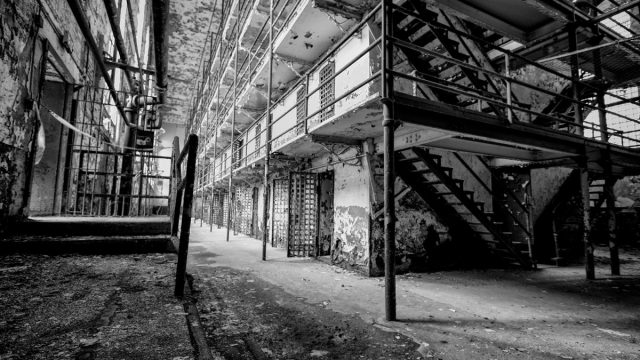
From coast to coast, the United States is blanketed by a rich tapestry of abandoned buildings—stately homes left to crumble, churches ravaged by the elements, entire towns lost to time. And while many of these structures eventually find themselves at the mercy of a bulldozer, others are left standing as little more than husks, eerie reminders of what once was.
If you’re eager for a really, really eerie adventure, we’ve rounded up the creepiest abandoned building in every state, from decaying mental institutions to spooky schoolhouses that haven’t seen students in a century. And if you’re hoping for an encounter with the paranormal on your travels, set your sights on the 15 Most Haunted Places in America.
Alabama: St. Luke’s Episcopal Church in Cahaba
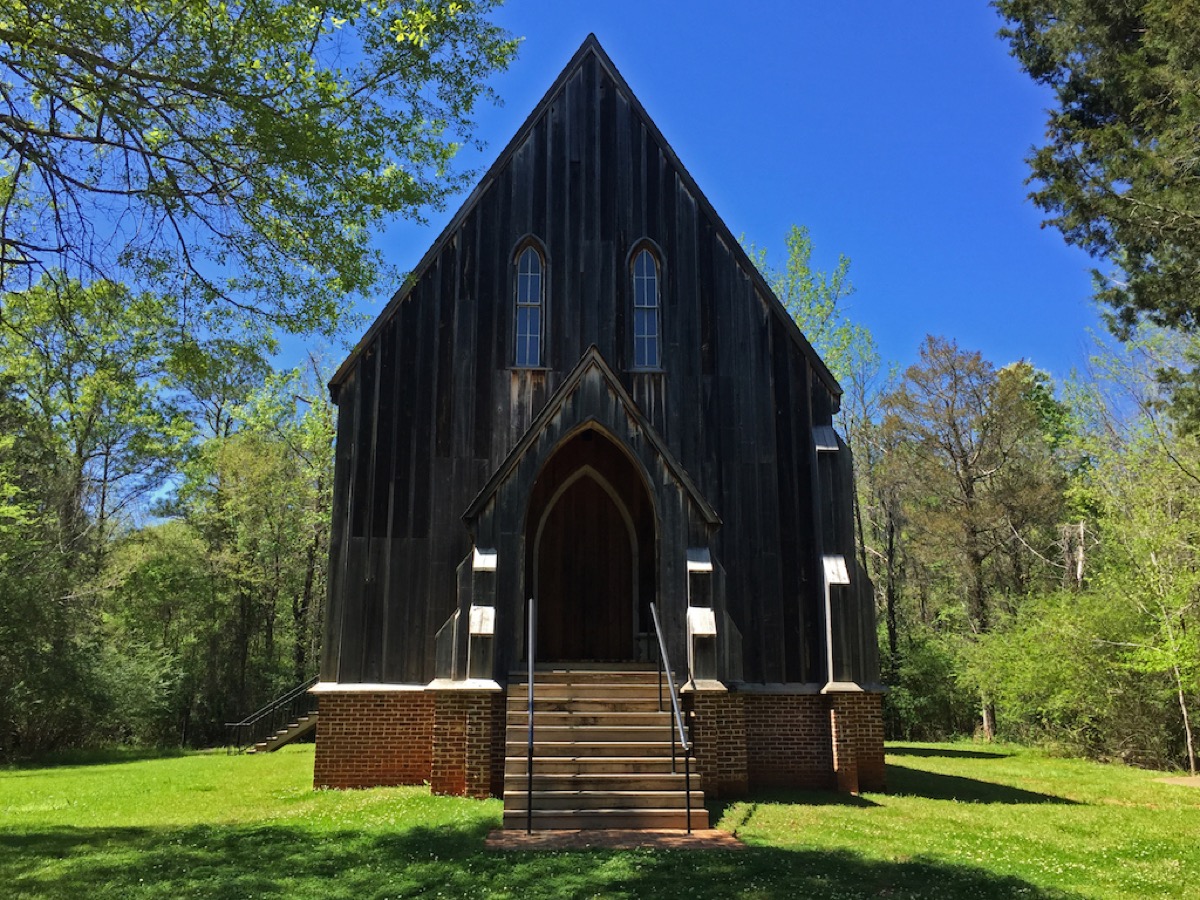
Once a thriving antebellum town—and the former capital of Alabama from 1820 to 1826—Cahaba served as a primary distribution point for the cotton trade and then as the location of a prison for Union soldiers during the Civil War. However, after a major flood in 1865, a large number of the town’s occupants fled, leaving many of Cahaba’s former landmarks unoccupied.
Today, several buildings still stand as reminders of this little town’s former glory. One such structure is St. Luke’s Episcopal Church, erected in 1854. This diminutive house of worship was such a pillar in the community that when Cahaba was effectively abandoned, the church was deconstructed and moved to a nearby town, where it remained until 2006. That year, it was once again dismantled and brought back to Cahaba. Visit the town today and, in addition to St. Luke’s, you’ll find numerous abandoned homes, cemeteries, and maybe even a ghost or two. And for more eerie Americana, check out these 25 Real-Life Places in America That Many Believe Are Cursed.
Alaska: The Kennecott Mines in Kennecott
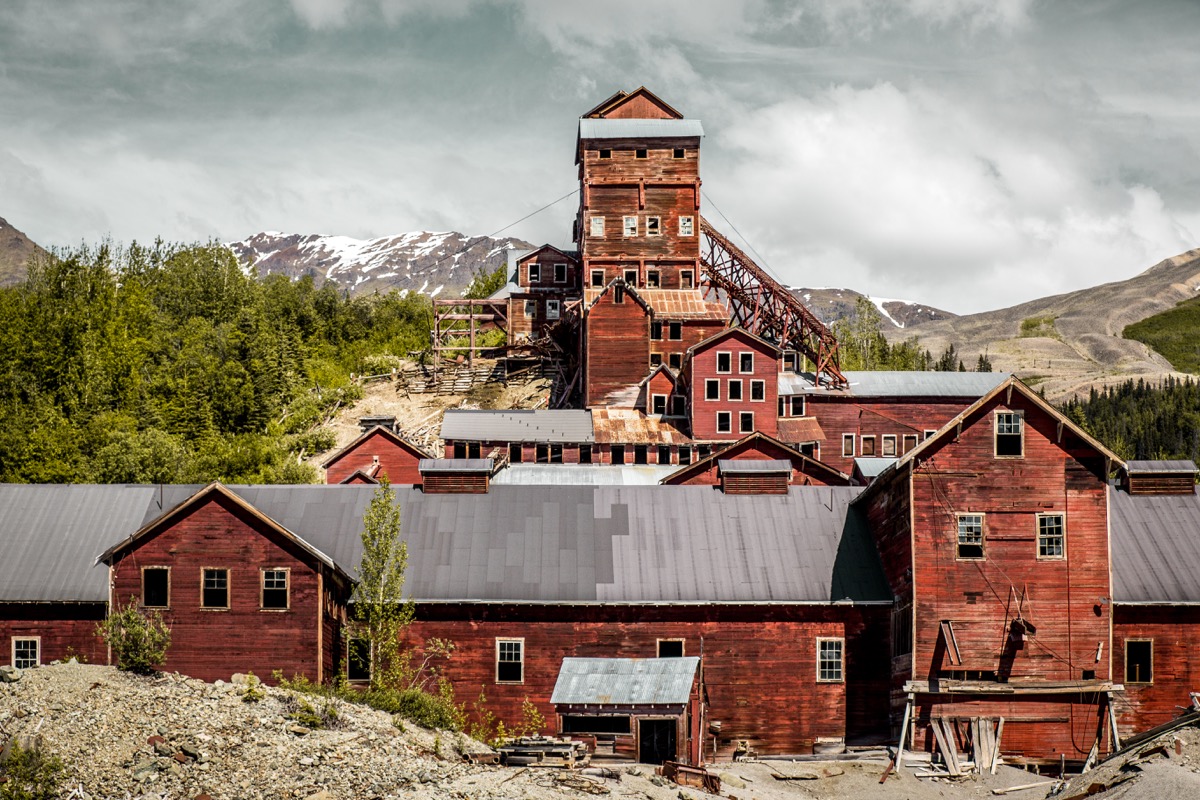
This abandoned mining camp, located in the Wrangell-St. Elias National Park and Preserve in Kennecott (the mines make up the entirety of the “town” of Kennecott), produced millions of dollars worth of copper back when it was operational from 1911 to 1938.
The Kennecott Mines were declared a National Historic Landmark in 1986, and the National Park Service has begun to restore the abandoned buildings to make them safe for visitors. However, that won’t do much to change Kennecott’s creepy history—from 1939 until 1952, the town was entirely deserted, except for one family of three who served as its watchmen. If that made your ears perk up, check out more of the 23 Urban Legends That Are Totally True.
Arizona: The Vulture Mine in Maricopa County
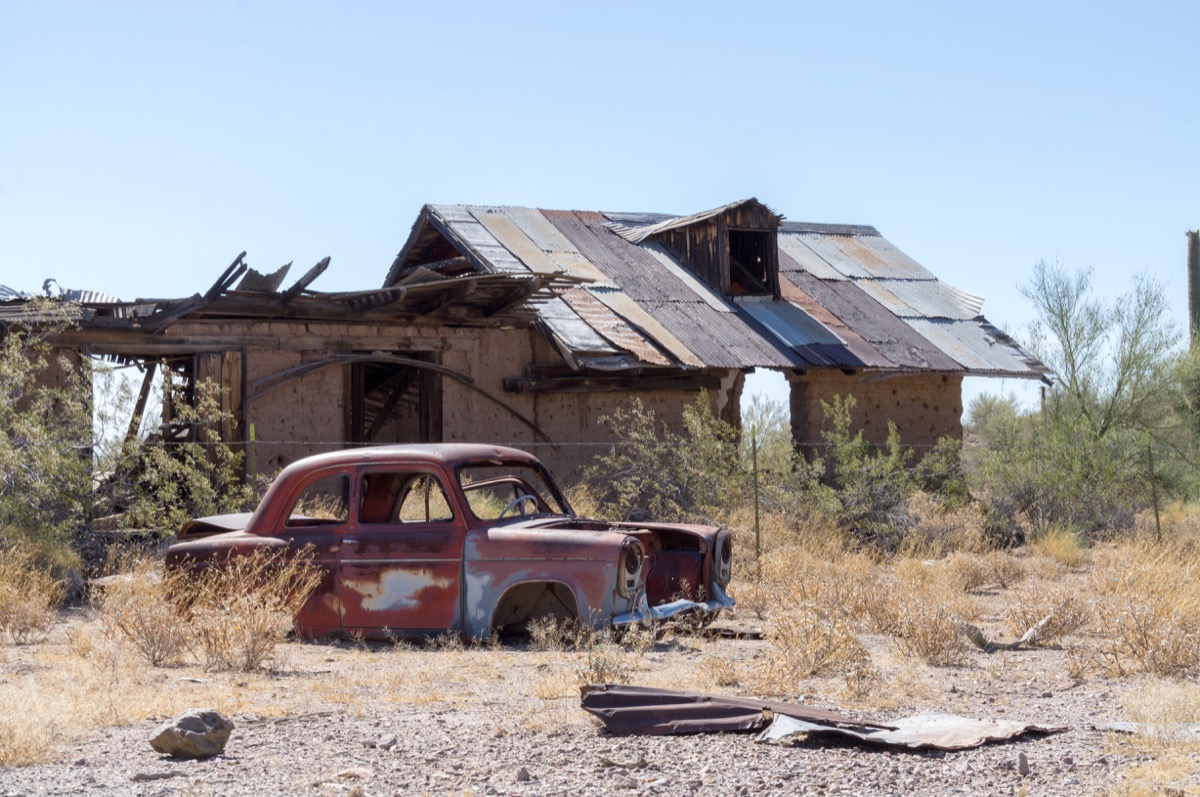
Arizona’s Vulture Mine, which began operating in 1863, produced some 260,000 ounces of silver and established itself as the most productive gold mine in the state’s history. However, upon being deemed “non-essential” by the War Production Board during World War II, the Maricopa County mine was shuttered in 1942. Residents fled Vulture City, leaving a ghost of a town, and mine, behind them.
The abandoned site gained notoriety when it was featured on the Travel Channel’s Ghost Adventures in 2010—and though it is privately owned, there are regular tours of the eerie estate. And for more on the architectural history of your home state, check out The Most Popular House Style in Every State.
Arkansas: The Wild Water Rampage tower at Dogpatch USA
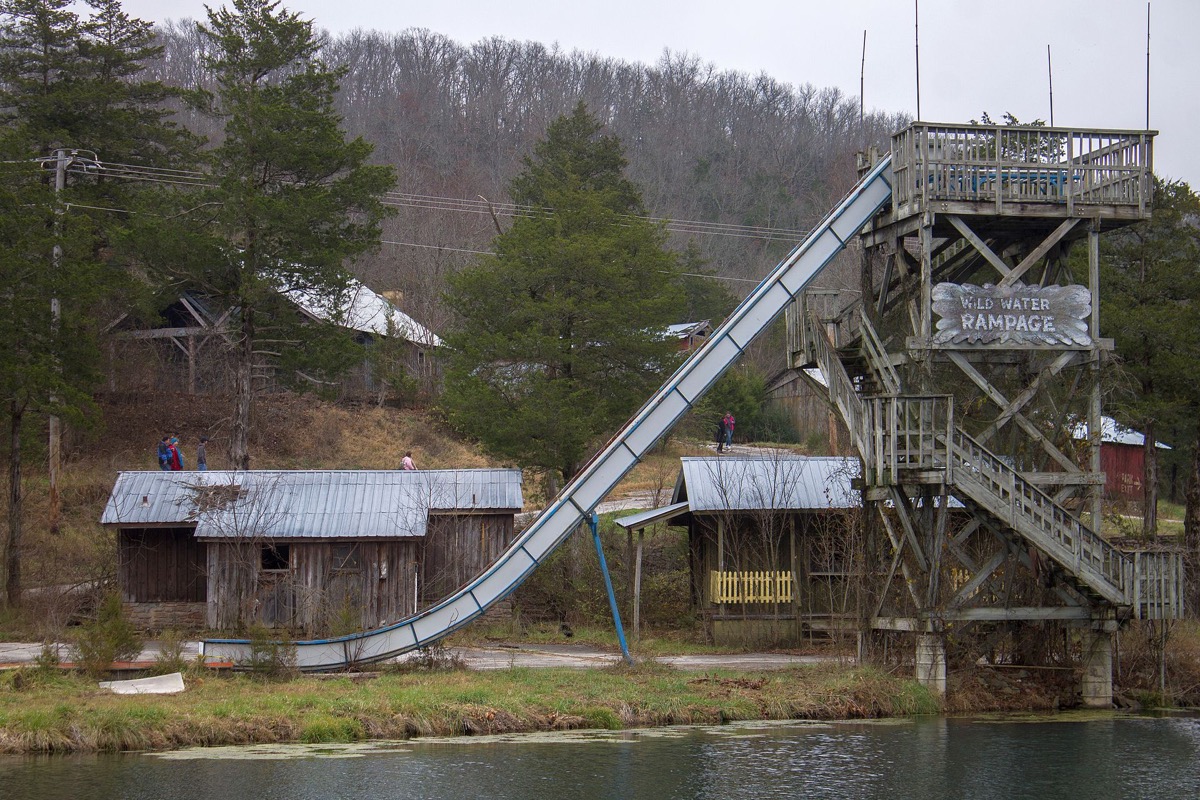
The Dogpatch USA theme park, located in the present-day Marble Falls Township, opened in 1968. Based on the Lil’ Abner comic strip created by cartoonist Al Capp, the “hill folk”-themed attraction could only maintain financial viability for so long, prompting the park’s closure in 1993.
The park remained abandoned for two decades until a local businessman purchased the property in 2014—though most of the abandoned attractions, including the Wild Water Rampage slide, still stand to date. It’s currently a popular site for urban explorers, although the owner lives on the property and is not a fan of trespassers, according to Atlas Obscura.
California: Alcatraz
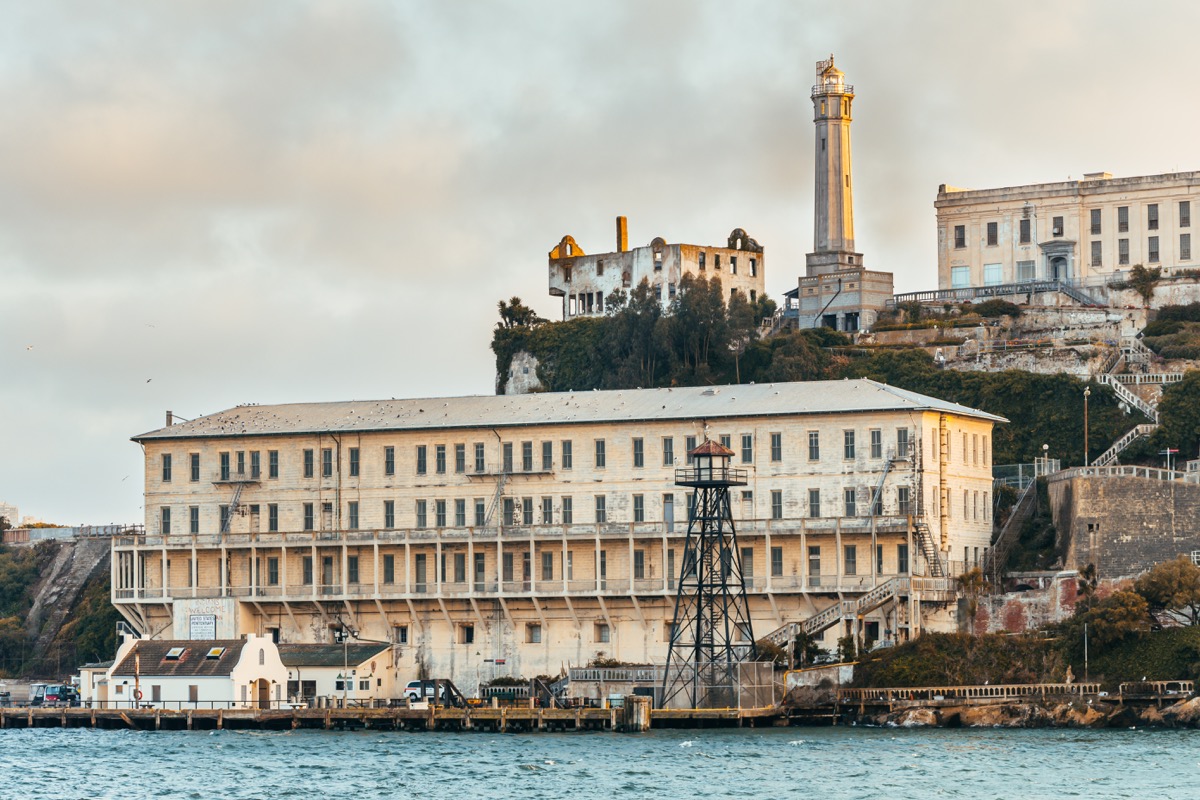
Perhaps the most famous prison in American history, Alcatraz, the former federal penitentiary, is no stranger to a spotlight on the big screen. The prison popped up in X-Men: Last Stand, The Book of Eli, Catch Me If You Can, and—no surprise, here—Escape from Alcatraz.
In real life, Alcatraz—which served as a military prison as early as the mid-1900s—shuttered in 1963. Reportedly, keeping prisoners locked up on an island was just too expensive. Such events inspired sci-fi mind-bender maestro J.J. Abrams to develop an eponymous TV show, about Alcatraz detainees who mysteriously disappeared upon the prison’s shutdown—and reappeared in the 21st century. It was cancelled after just 13 episodes.
Colorado: These western storefronts in St. Elmo
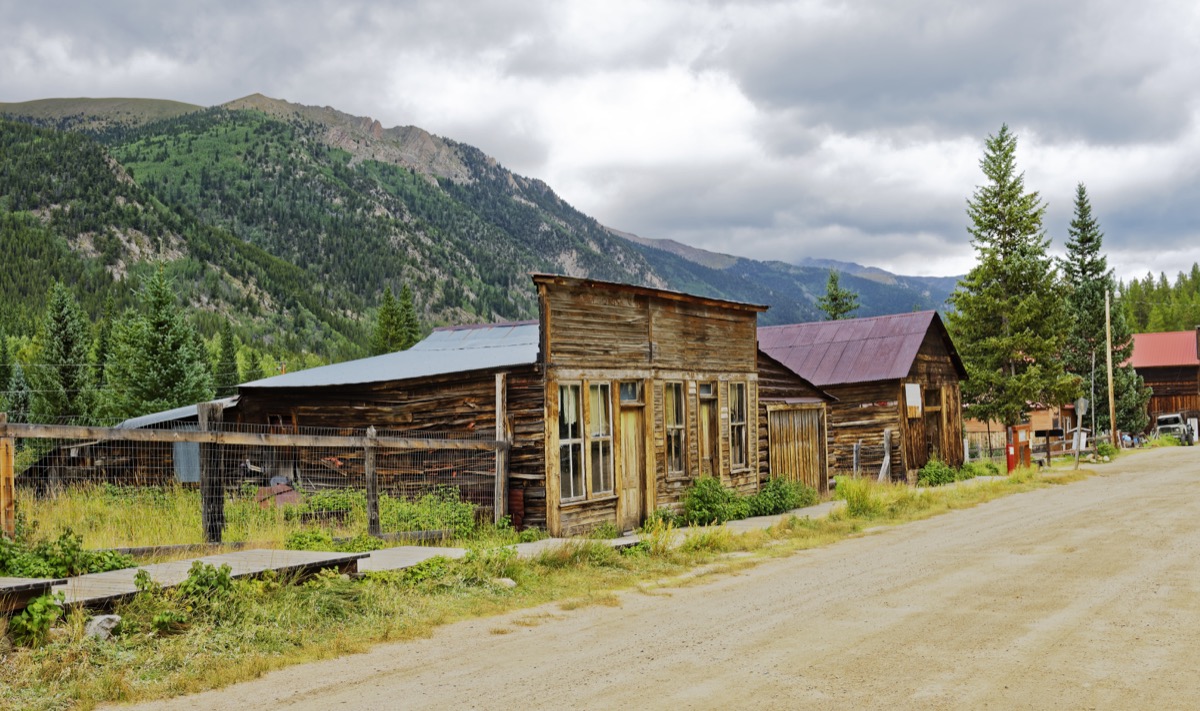
St. Elmo, Colorado, was established in 1880 as a gold and silver mining town, and at one point, it was home to a population of 2,000 people. But when the mining industry began to decline in the 1920s, the town saw its inhabitants depart for greener pastures. By the time the railroad ceased service to St. Elmo in 1922, the town was effectively abandoned. Then, with the death of the town’s postmaster in 1952, even the mail service was cut off.
And while St. Elmo is one of Colorado’s better-preserved ghost towns, there’s only so much to explore. If you choose to visit, you’ll have to stay in the nearby city of Salida, since St. Elmo is little more than a collection of abandoned saloons and general stores today. And for more horrifying stories, check out these 27 Spine-Tingling Internet-Era Urban Legends.
Connecticut: The old Remington Arms Factory
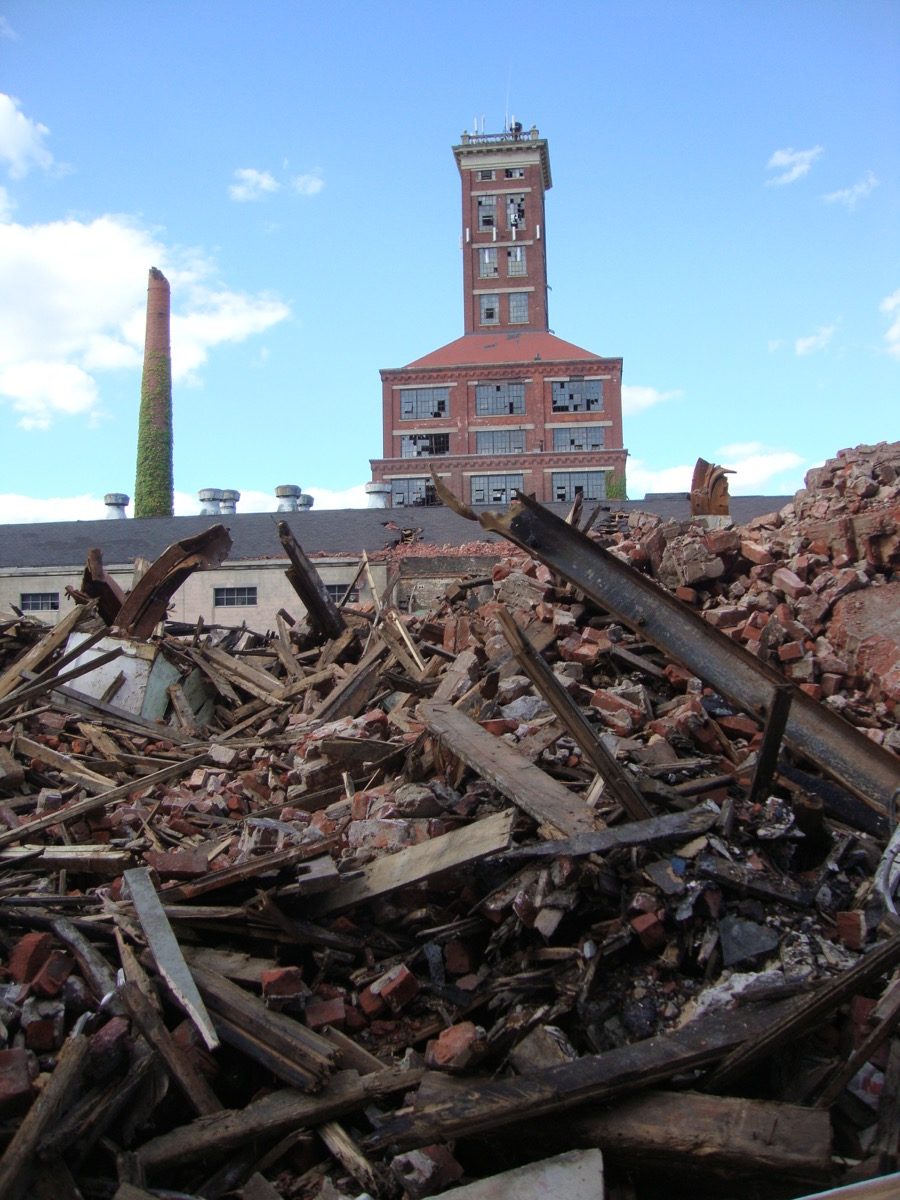
If you drive or take the train through Bridgeport—hey, it’s on the road from New York to Boston—you can’t miss it: The dilapidated Remington Arms Factory. In 1988, Remington, one of America’s largest weapons manufacturers, just up and left their massive complex. It’s been totally abandoned ever since.
The whole compound was slated for demolition in 2012. But that clearly never happened. Then, in 2015, plans for demolition (and redevelopment) were made again. That clearly never happened, either—and a drive through town today, where you’ll see the factory standing as ominous as ever, suggests it never will.
Delaware: The barn at the Reedy Island Range Real Light
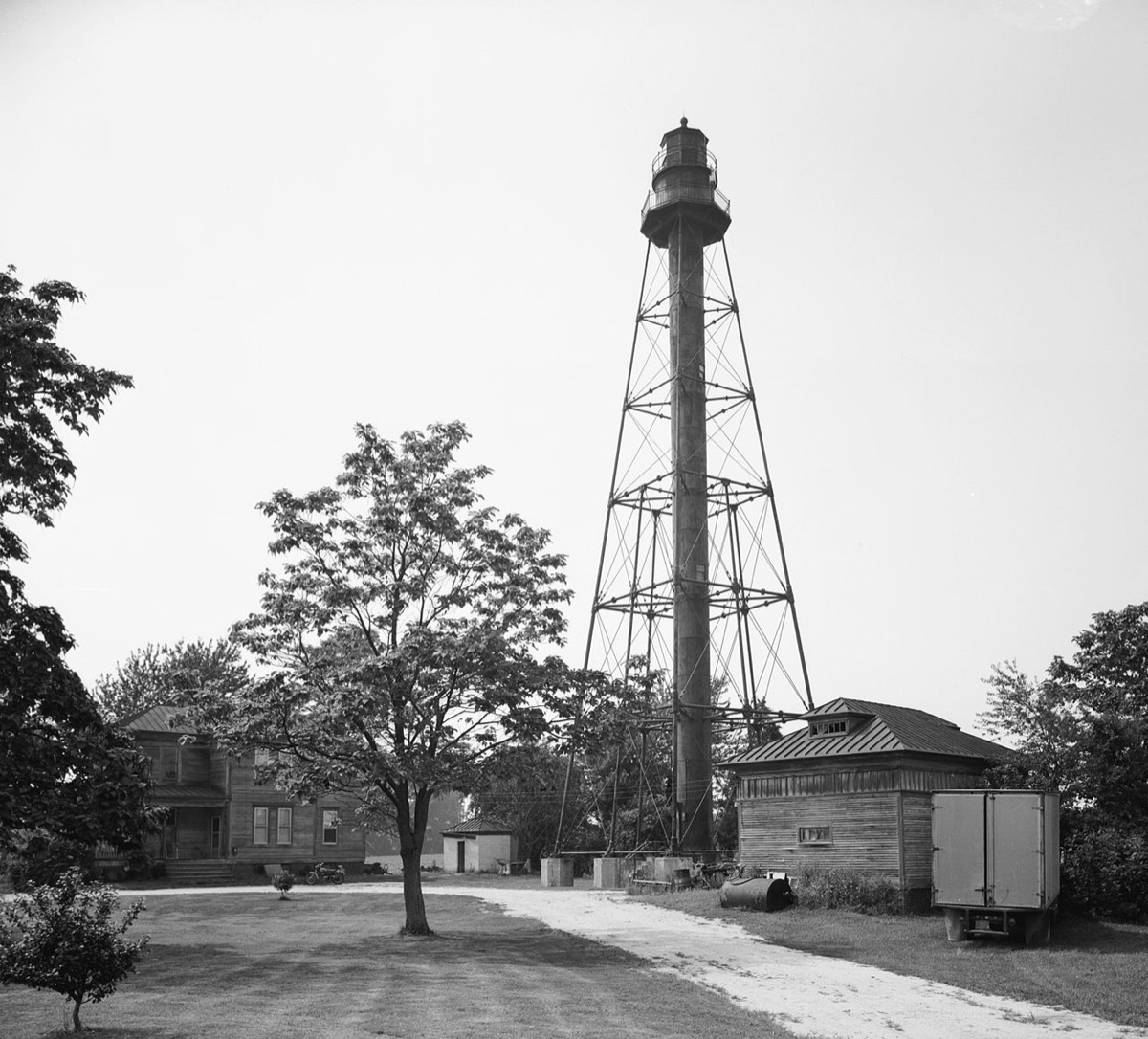
Abandoned lighthouses are always creepy. But in the case of the Reedy Island Range Rear Light, first lit in 1904, it’s not the lighthouse itself that casts an eerie glow. That honor goes to the lighthouse keepers’ quarters, which at one point included an eight-room home, an oil house, and a barn.
When the range light became automated in the 1950s, the lighthouse keeper’s job became obsolete, and the quarters were sold and eventually abandoned. In 2002, a fire destroyed the home and the oil house, leaving only the rickety wooden barn and the lighthouse standing today.
Florida: The Cape Romano dome homes
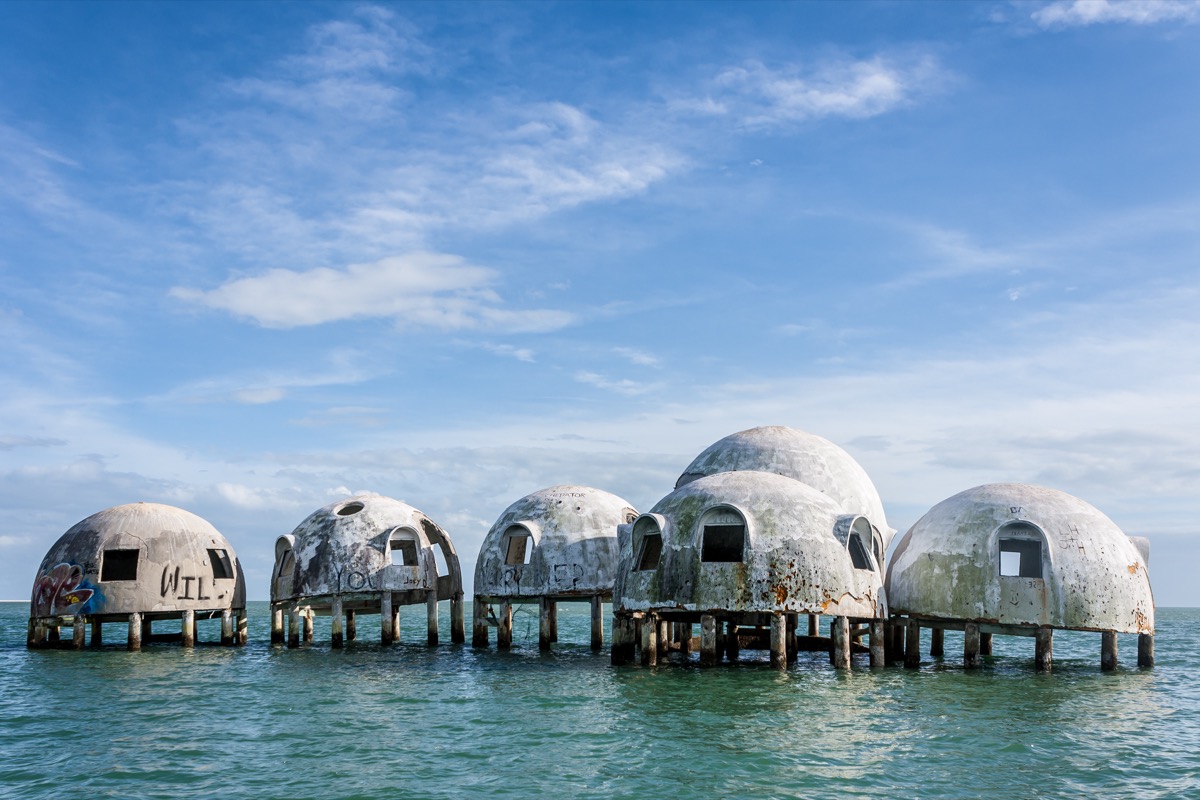
These small dome homes off the coast of Marco Island, in Cape Romano, were built in 1981 as a holiday retreat by eccentric businessman Bob Lee and his wife, Margaret. When they were first constructed, the lifted domes stood on a firm beach, but rising water meant that the once-grounded domes were soon surrounded by the sea.
And while the homes have been abandoned since 2007, and sustained some damage from Hurricane Irma in 2017, these odd little bubble houses are still largely intact. If you’re willing to get in a boat and paddle out to them, there’s not much stopping you from paying them a visit.
Georgia: The Central State Mental Hospital
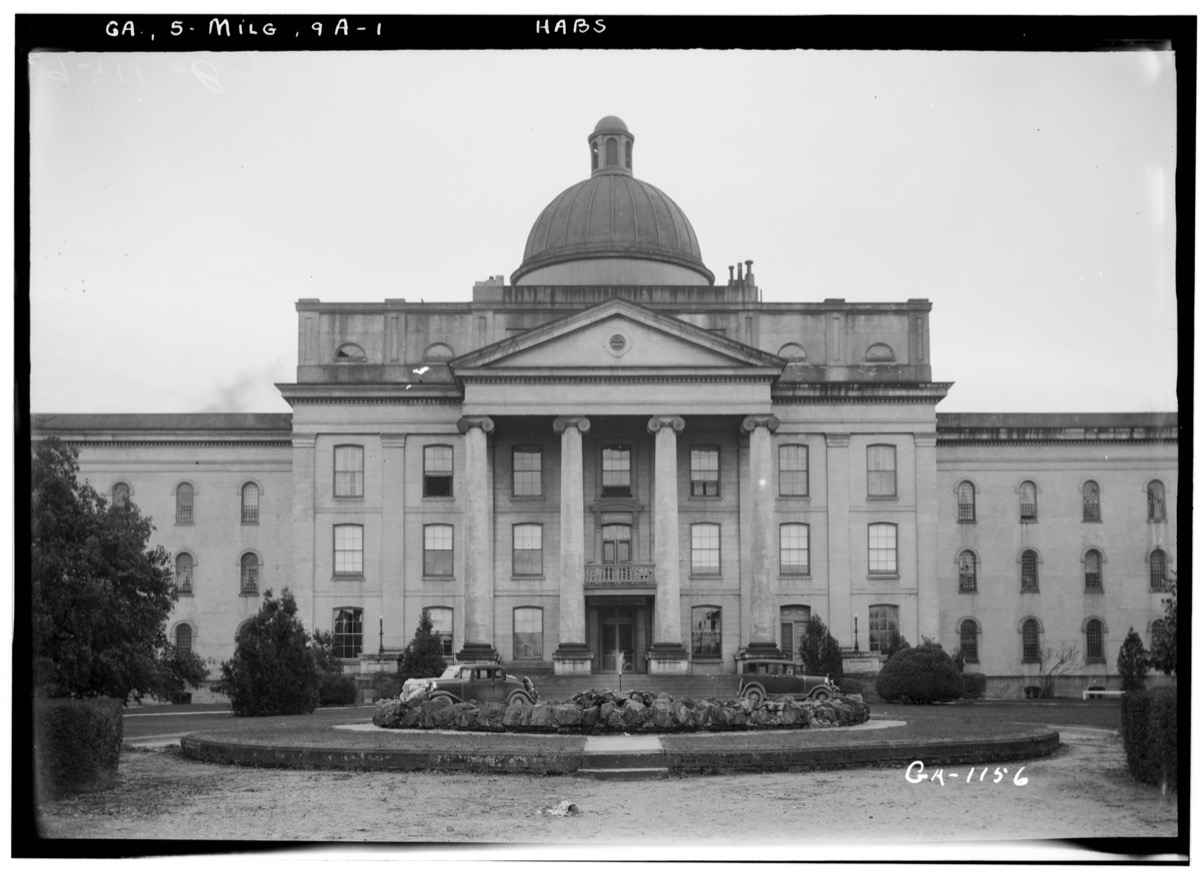
When it opened in 1842, the Central State Mental Hospital in Milledgeville offered all sorts of horrifying treatments, from lobotomies to electroshock therapy. The controversial procedures administered therein have ceased, but the 2,000-acre campus, which features around 200 individual buildings, remains today. And while some parts of the site are still operational—the main hospital building is home to about 200 patients—the majority of the campus is abandoned.
And as if these grounds aren’t eerie enough, there’s also a nightmarish cemetery just steps away. If you visit Central State, you’ll find some 2,000 cast-iron markers in the site’s Cedar Lane Cemetery. According to Atlanta Magazine, the markers “commemorate the 25,000 patients buried on the hospital grounds,” each marked with a number in place of a name. That’s because the original cemetery—and its proper grave markers—was dismantled by the inmates who once maintained the grounds.
Hawaii: The Kaluakoi Resort
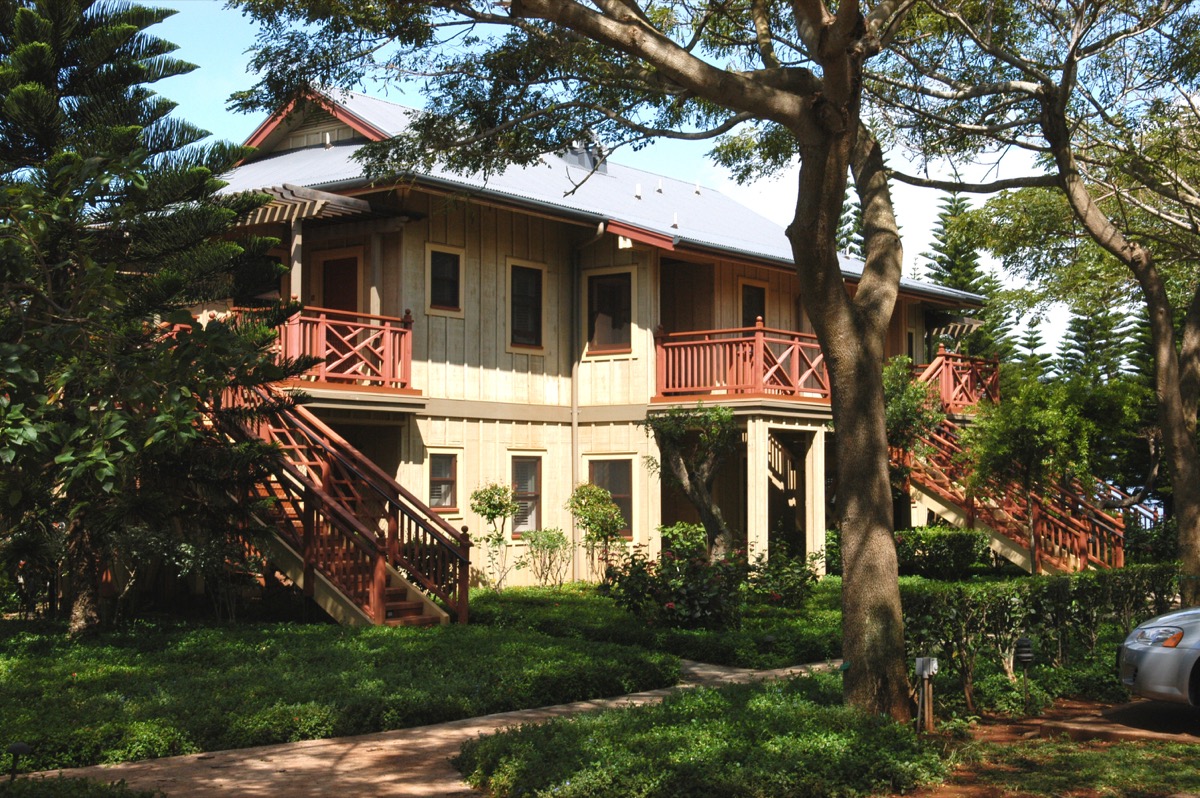
While mainland Hawaii is comprised of eight major islands, there are 137 official “islands” in the Hawaiian chain, including Molokai. On this lesser-known piece of paradise, you’ll find the abandoned Kaluakoi resort, which opened in the 1970s and closed in 2001. Where there were once luxurious quarters and stunning private balconies, you’ll now find padlocked rooms, rickety railings, and broken windows.
Idaho: The Albion State Normal School
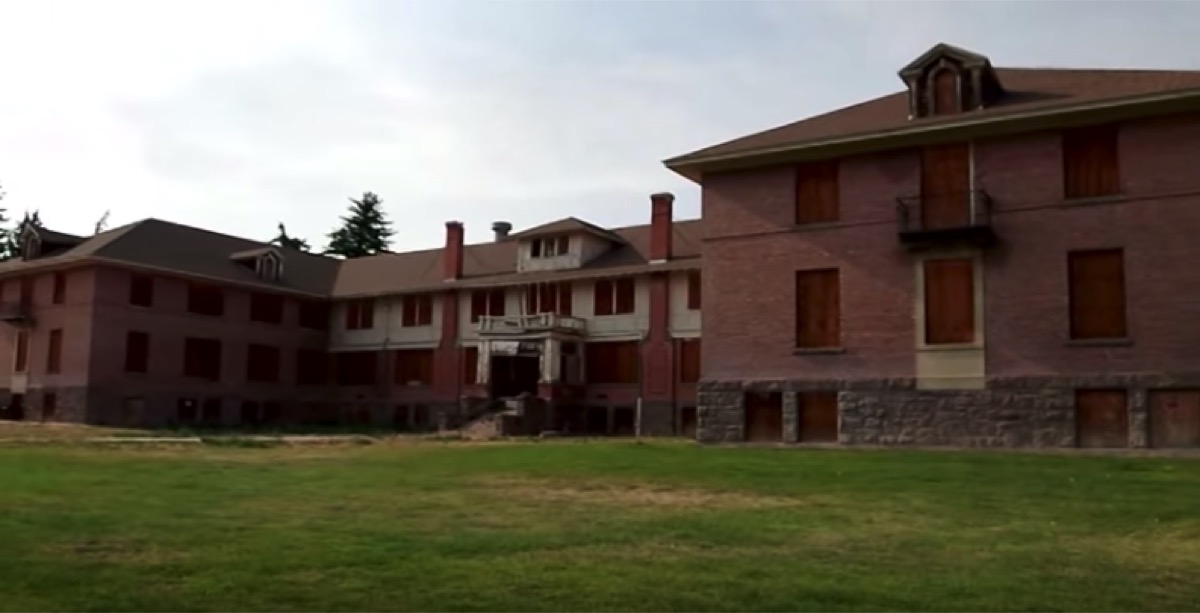
Established in 1893 in Albion, the Albion State Normal School distributed some 6,460 degrees during the 58 years it was open from 1893 to 1951. Unfortunately, the school, which focused on training teachers, was plagued by low enrollment and a lack of funding. And once it was left vacant, it was plagued by even more. In 2017, a camera crew from Ghost Adventures visited the school and determined it had “dark energy from satanic graffiti.” Today, the property is boarded up and plays host to a series of ghost tours.
Illinois: The Savanna Army Depot
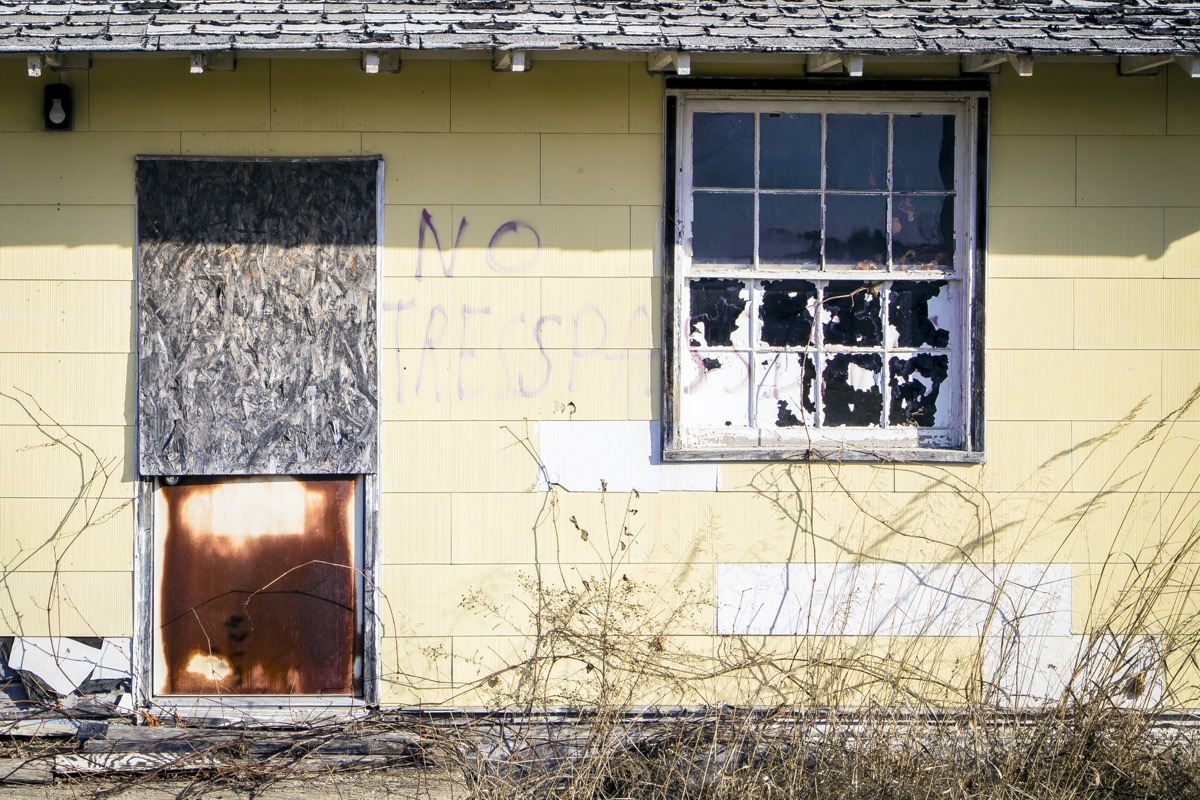
Located about seven miles north of Savanna, Illinois, the 13,062-acre Savanna Army Depot opened in 1917 and served as a proving and testing facility for weapons developed at the nearby Rock Island Arsenal. Since 2000, this depot has been empty, save for the 9,404 acres of its land dedicated to the Upper Mississippi River National Wildlife and Fish Refuge. Today, the Depot is home to little more than abandoned buildings and empty roads, with few remaining signs of the thriving military hub it once was.
Indiana: The City Methodist Church
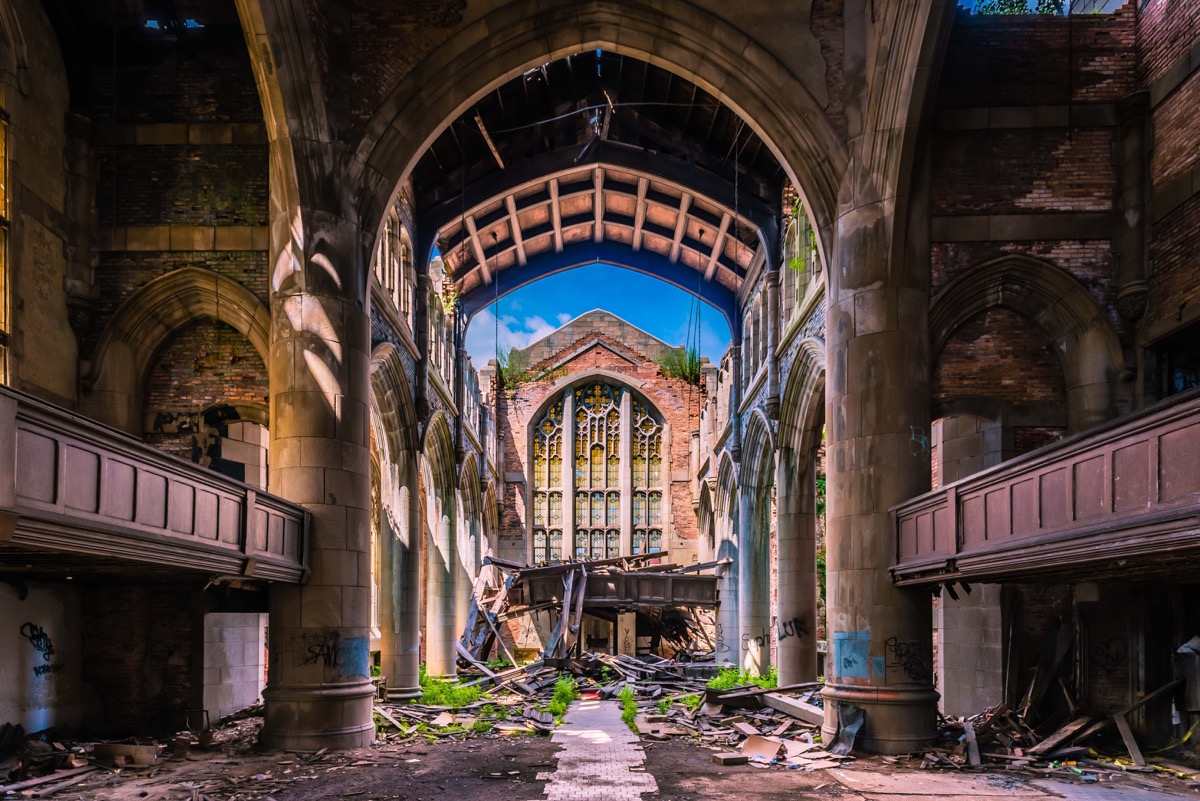
When it was constructed in 1927, the City Methodist Church in Gary, Indiana, cost an impressive one million dollars to build. At one point, it was even the largest Methodist church in the Midwest. But as the city of Gary declined through the ’60s and ’70s, the church’s membership decreased dramatically, from 3,000 members in the 1950s to just 320 by 1973.
Eventually, the church shut down and the building was abandoned in 1975. Recently, it’s served as a filming location for productions like Transformers and the Netflix series Sense 8. City officials have even floated the idea of turning the building into a “ruins garden park” that could host weddings, reunions, and art performances, according to the Chicago Tribune.
Iowa: Old Bagley School Building
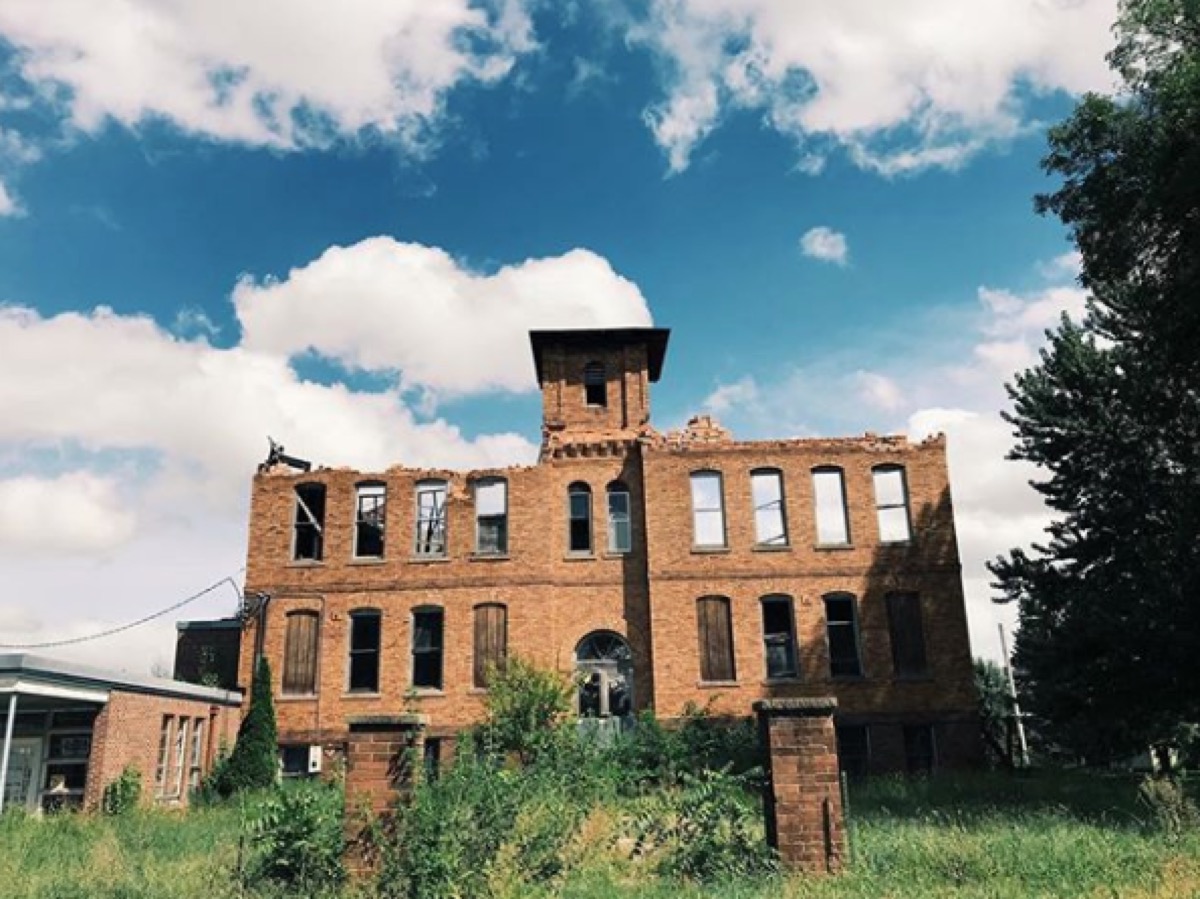
Since 1950, more than 4,300 school districts in Iowa have been consolidated or eliminated. In the late ’80s, Bagley was one such district, and the school was sold to a private buyer. According to one report, the building actually stayed in fairly good shape—until the roof started collapsing, in 2011. Since then, not a penny has been allocated for repairs.
Kansas: Winstead Drive-In in Merriam

As one of the first drive-in restaurants in the country, Winstead’s opened its first Kansas City restaurant in 1940. Between Kansas and Missouri, just seven locations remain open. (There was once more than a dozen in the Kansas City metro area alone!) This vacant Winstead’s, located in Merriam, was one of the unlucky ones.
Kentucky: The Waverly Hills Sanatorium
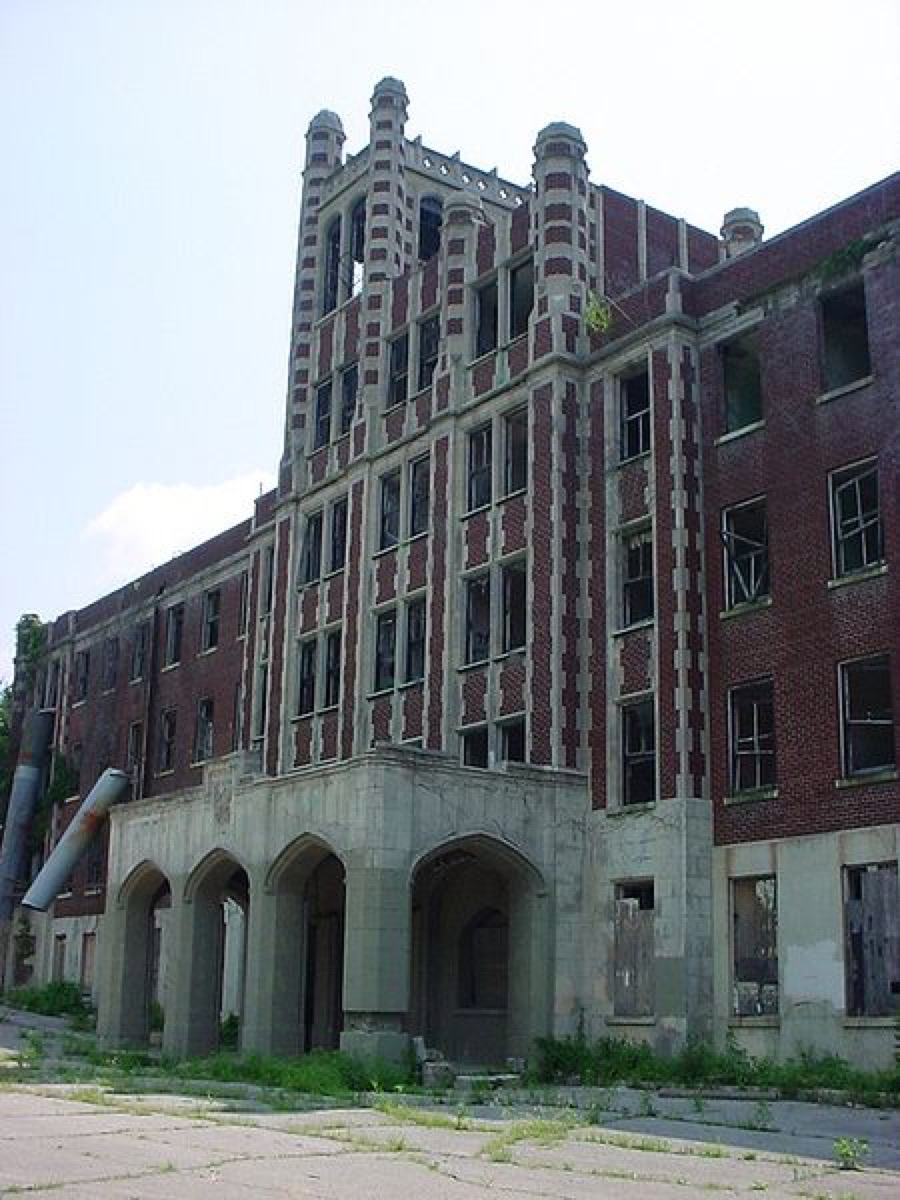
The Waverly Hills Sanatorium in Louisville was first opened in 1910 to accommodate around 50 tuberculosis patients. But after a cure for the disease was discovered and demand for the sanatorium fell, the hospital was shuttered in 1961. Though the building has stood empty for decades, it’s remained a popular local institution, and frequently hosts ghost tours and overnight stays. In fact, according to Ghost Hunters, the Waverly Hills Sanatorium has some of the most rampant paranormal activity in the Eastern U.S.
Louisiana: The LaLaurie Mansion in New Orleans
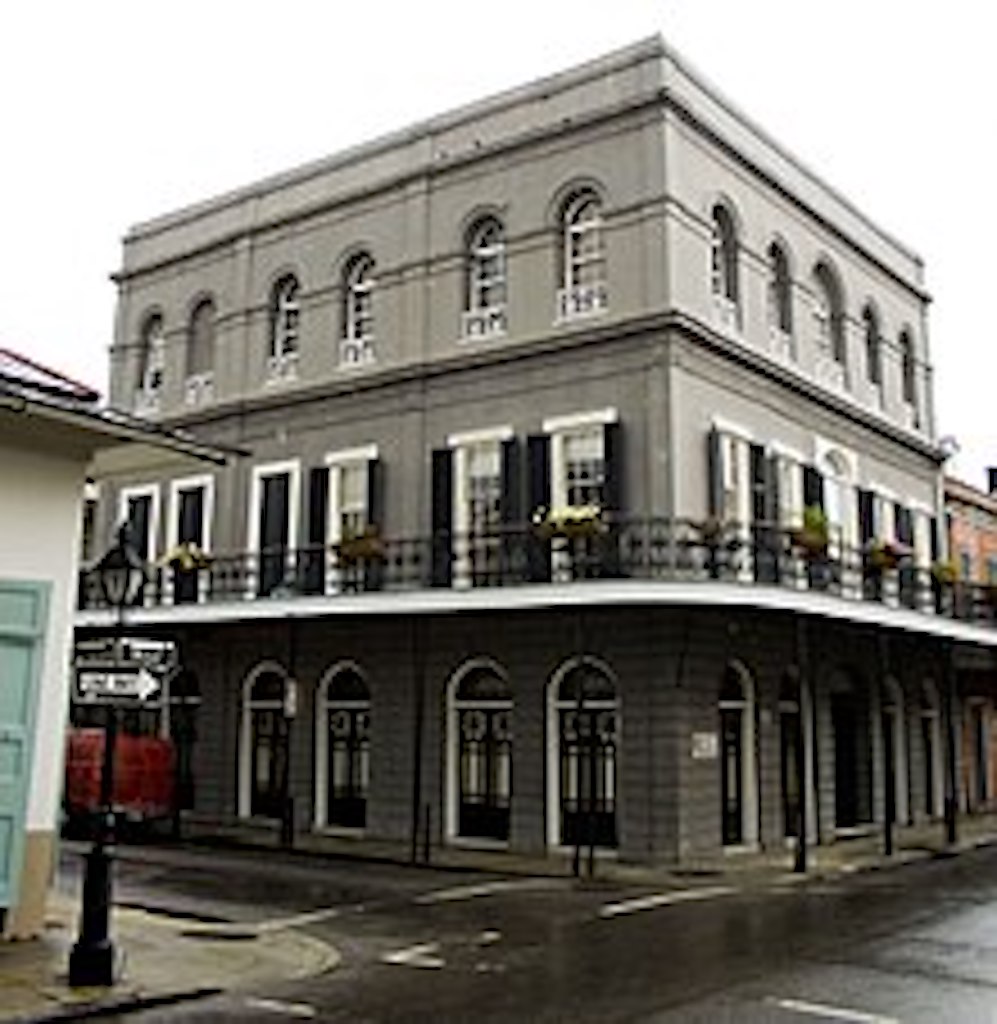
Fans of American Horror Story know the story of Madame Delphine LaLaurie, a New Orleans socialite accused of torturing and killing slaves at her mansion on Royal Street in the city’s French Quarter. When a fire broke out at the home in 1834, many of LaLaurie’s slaves were trapped. And when the townspeople heard of the woman’s crimes against them, they stormed the mansion in retaliation, forcing LaLaurie to retreat to France.
Immediately, the house was abandoned. And while it’s had several owners throughout the years, it currently sits vacant. The mansion is rumored to be one of the most haunted residences in the French Quarter and is a stop on several ghost tours. But before you go, beware: Many tourists report feeling faint or nauseous as they pass by.
Maine: The Portsmouth Naval Prison
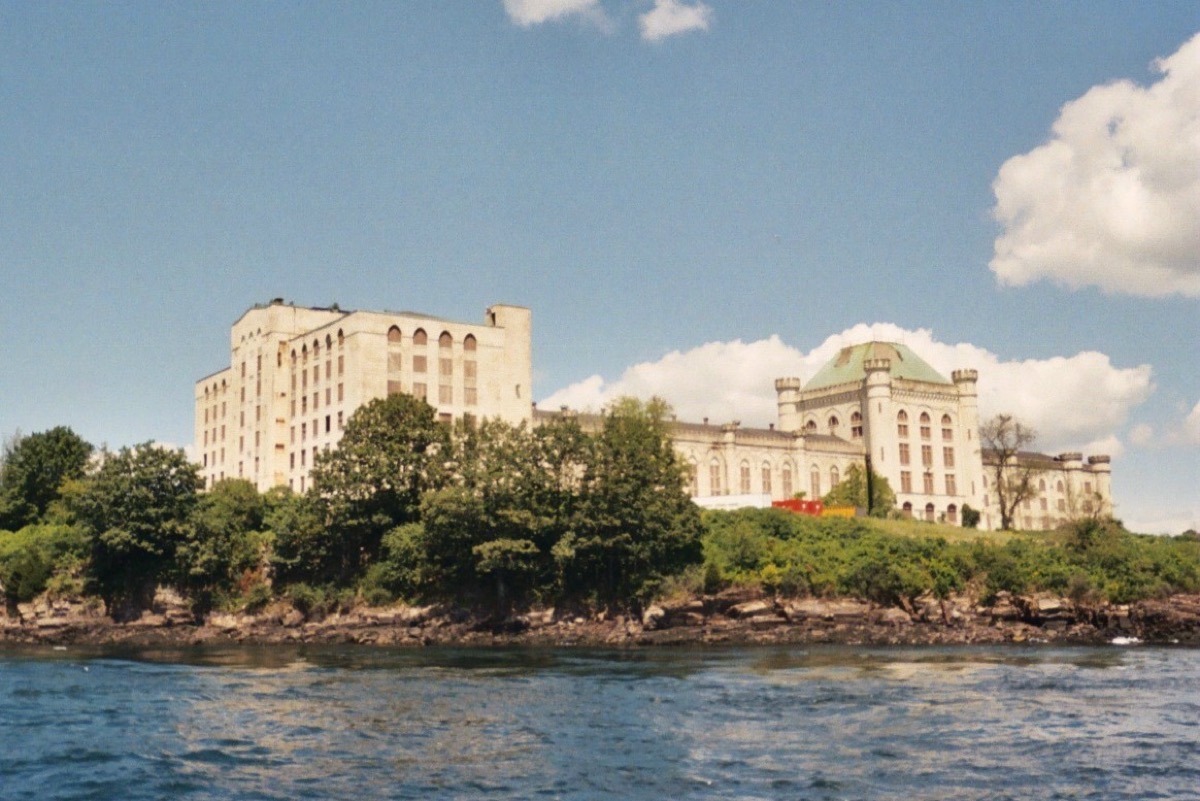
Dubbed the “Alcatraz of the East,” the Portsmouth Naval Prison in Kittery, Maine, is a former U.S. Navy and Marine Corps prison that has been abandoned since it shut down in 1974. Opened in 1908, the concrete fortress truly was modeled after California’s Alcatraz—and, similar to The Rock’s location in San Francisco Bay, is even positioned on the swift-flowing Piscataqua River to deter escapees. And while there were several attempts to escape the prison during its time in operation, only one was successful—a prisoner who sawed through his cell’s bars and crossed the river by sailboat.
Maryland: The castle at the Enchanted Forest theme park
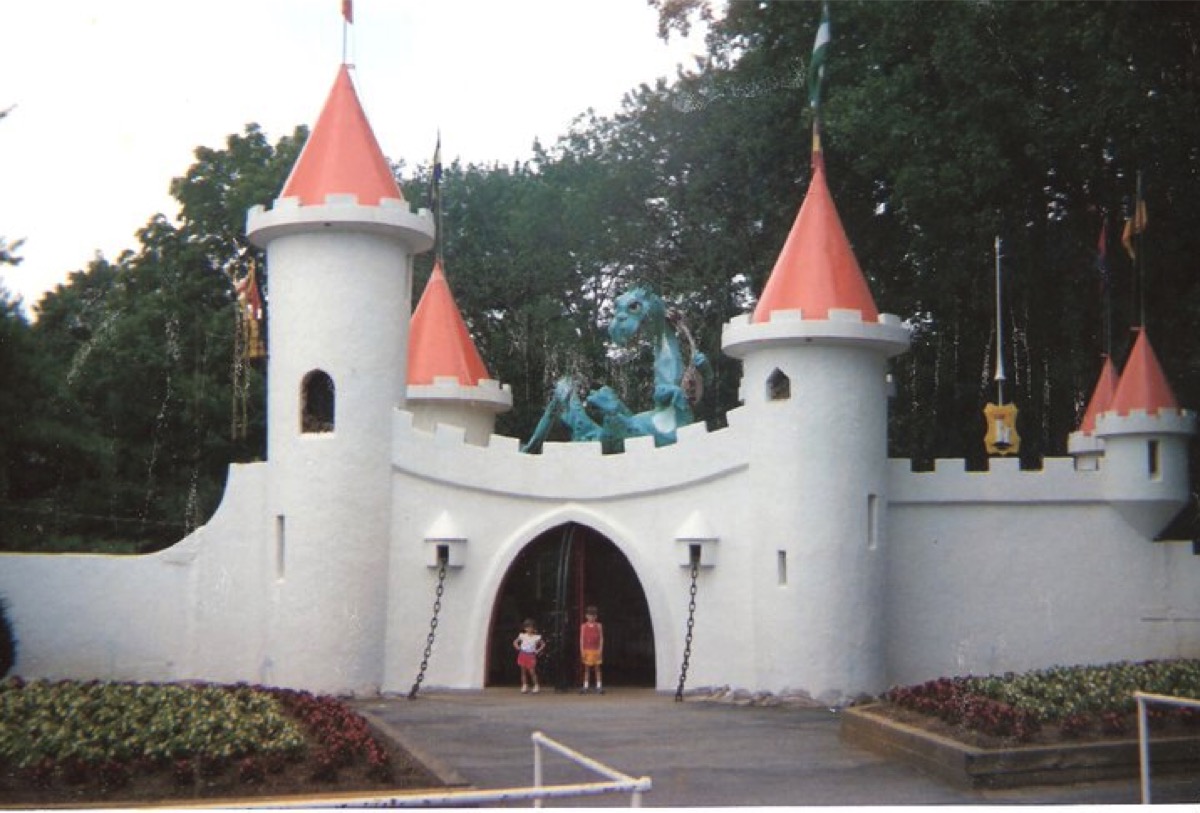
Behind a Safeway shopping mall in Ellicott City, you’ll find the abandoned Enchanted Forest amusement park. Opened in 1955, the Disneyland-inspired park drew close to 400,000 visitors each summer during its peak in the ’70s and ’80s. However, after facing stiff competition from up-and-coming roller coaster theme parks in nearby Baltimore, the Enchanted Forest closed in 1989. The eastern side of the park was bulldozed and converted into a mall, but the rest of the park remains untouched and abandoned—which means you can still visit this cartoonish castle today.
Massachusetts: The Northampton State Hospital
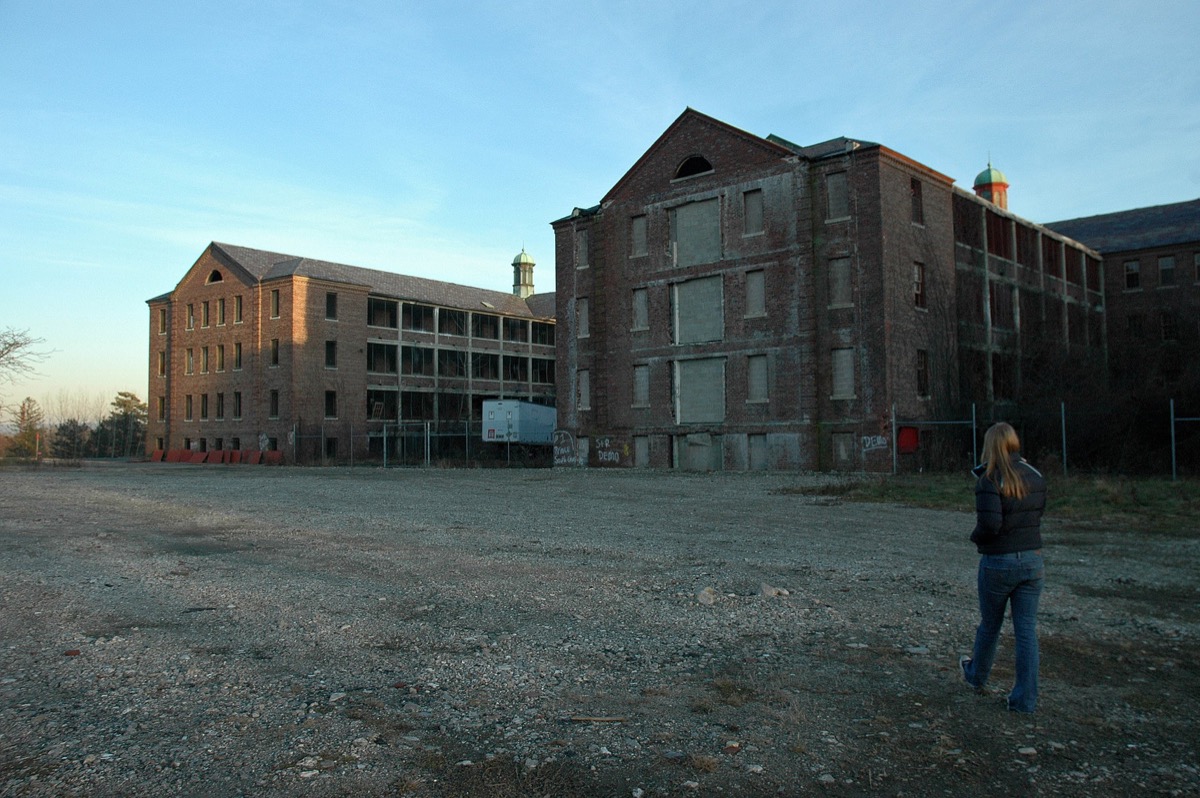
Constructed in 1856, the Northampton State Hospital in Northampton, Massachusetts, was built to “cure the insane in the Moralist tradition,” according to its history website. In layman’s terms, that meant providing a beautiful location for the ill to recuperate while so-called medical professionals worked at balancing the four humors in the patient’s body—a quack practice that has long since been debunked.
In addition to its horrifying “treatments,” the hospital was also severely overcrowded. While it was only meant to accommodate 250 patients, it housed nearly three times that many in 1907, and the building was shut down for good—its last three patients transferred elsewhere—in 1993.
Michigan: Michigan Central Station
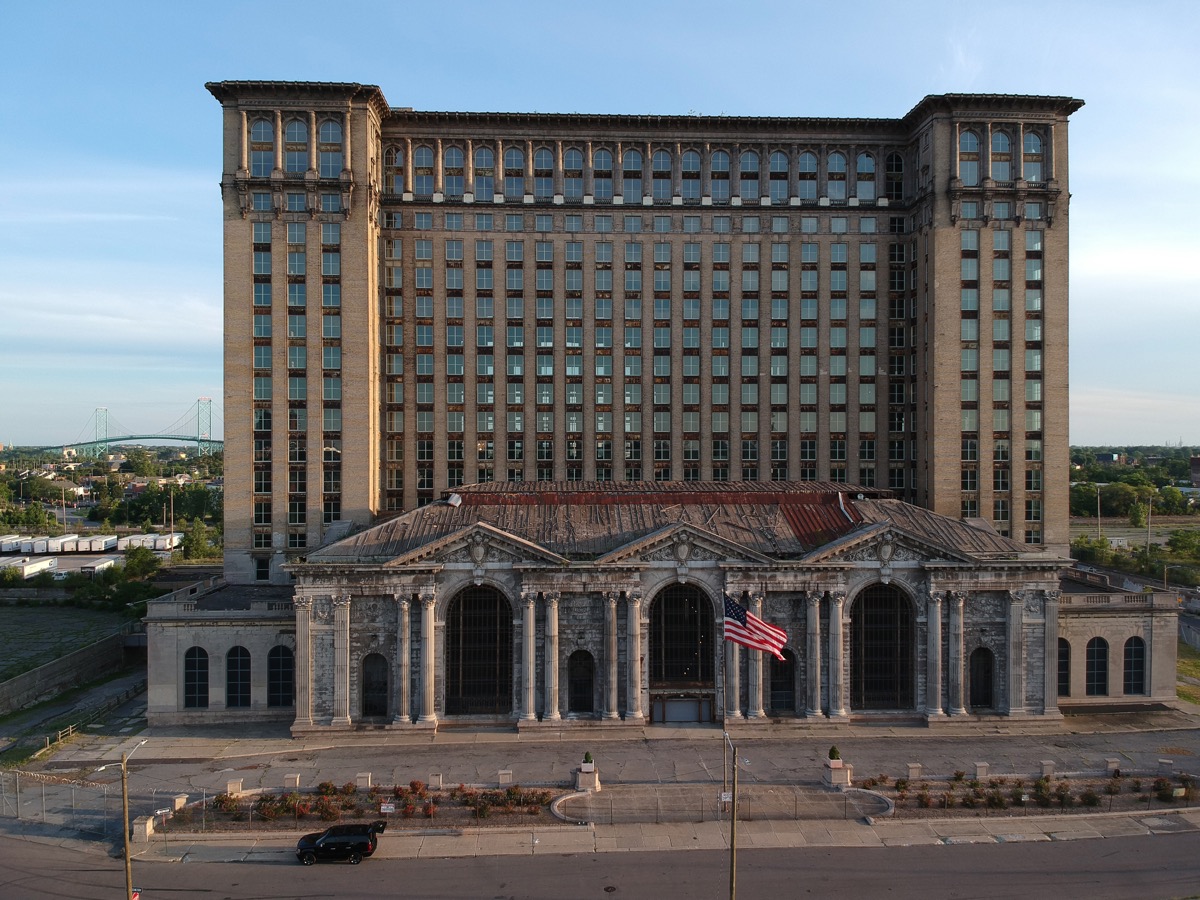
It’s hard to believe this towering 13-story structure in the Corktown district of Detroit is completely abandoned, but it’s true. Opened in 1914, Michigan Central Station was a passenger rail depot and one of the largest gateways to the Midwest. However, as the use of passenger trains began to decline in the 1950s, the grandiose station was used less and less, and eventually shut down in 1988. In May 2018, Ford Motor Company purchased the building, likely for use as the centerpiece of the company’s new Corktown campus—but until then, it remains eerily abandoned.
Minnesota: The Flour Mill District
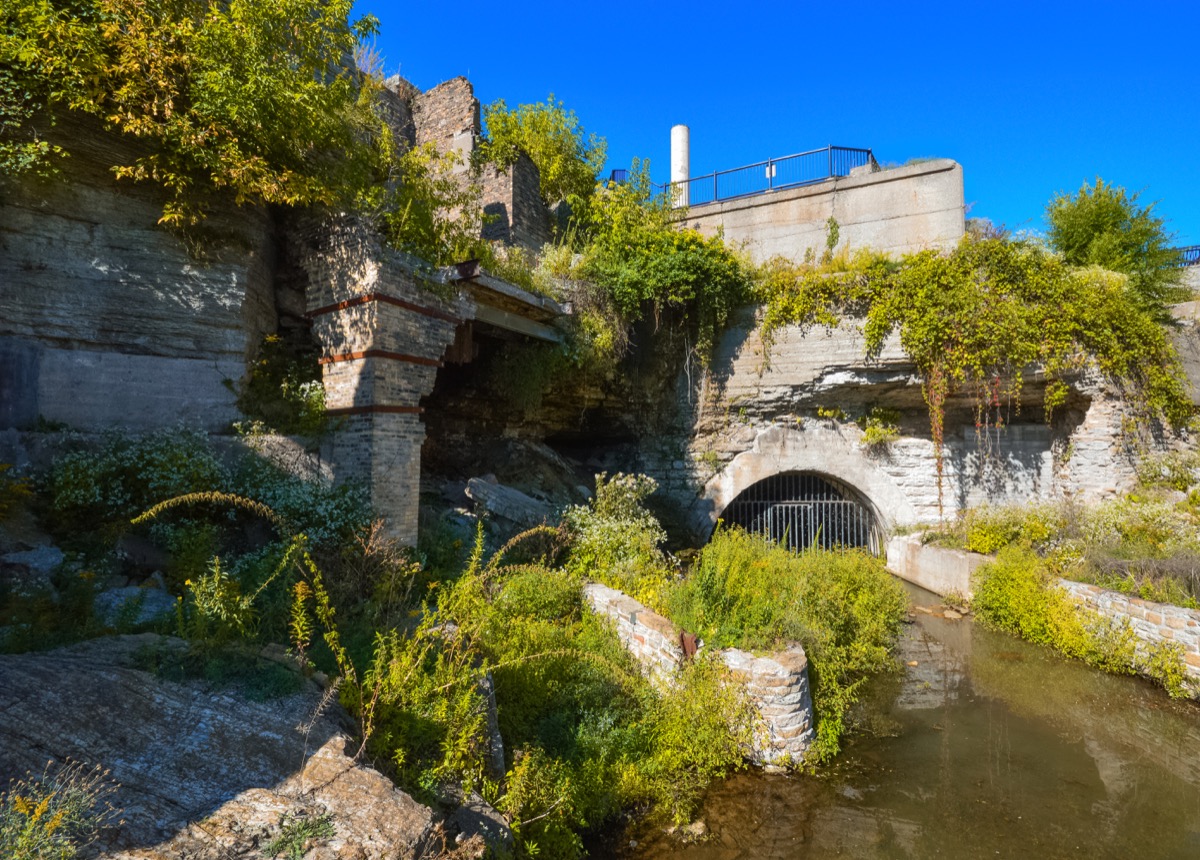
A number of abandoned flour mills still sit on the banks of the Mississippi River in Minneapolis’ Flour Mill District. Once upon a time, beginning in the latter part of the 19th century, this region was considered the Flour Milling Capital of the United States—and the site of “The Great Mill Disaster” of 1878, in which an explosion at the Washburn A Mill killed 14 men. While some of the mills were turned into museums after the area’s decline since World War I, there are many others that remain abandoned today.
Mississippi: The Rodney First Presbyterian Church
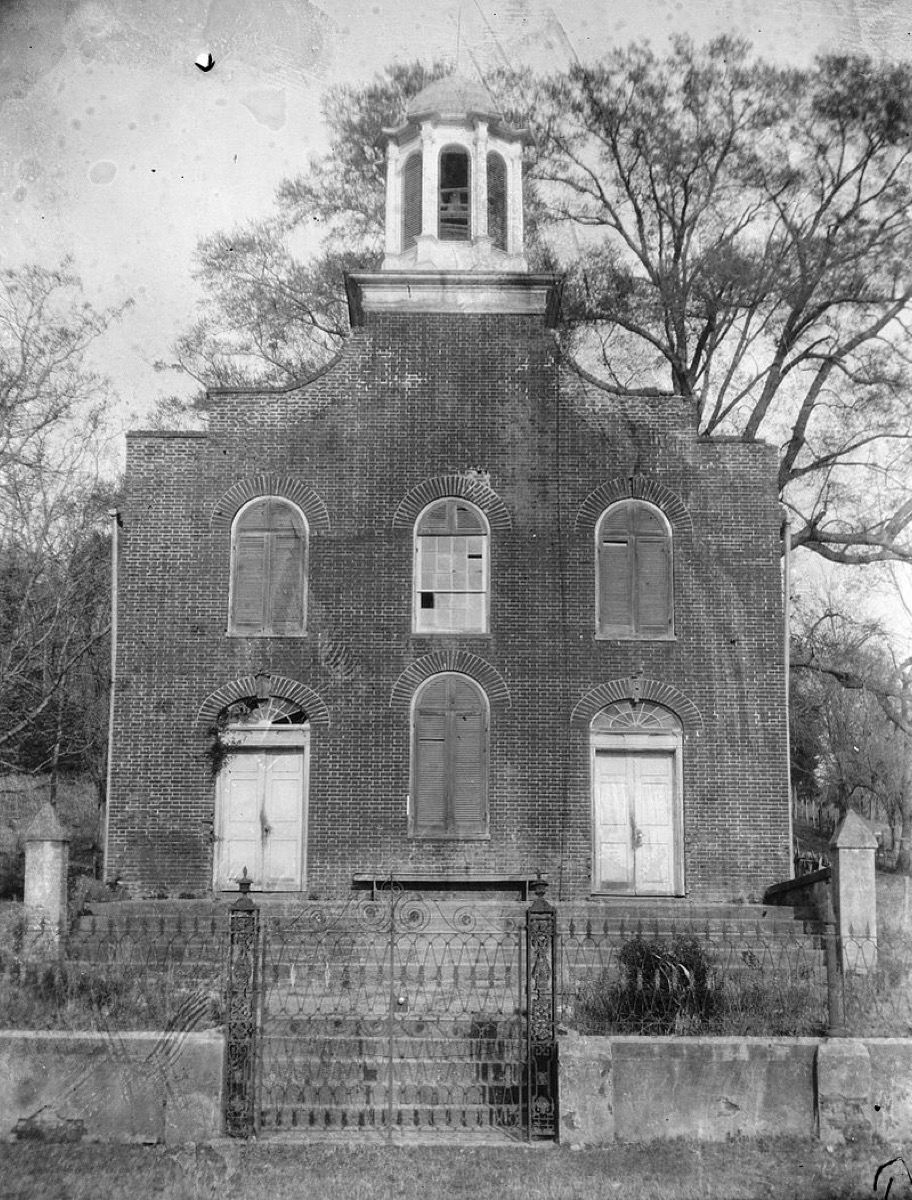
The town of Rodney, first settled in 1763, was once so important to the state of Mississippi that it almost became its capital. Two centuries later, though, after the Mississippi River changed course (and moved away from the town), Rodney is now largely deserted, with only a handful of individuals still residing there. Among the most fascinating of Rodney’s remaining edifices is the abandoned First Presbyterian Church, built in 1831, and still bearing the damage from a cannonball that was launched into its side during the Civil War.
Missouri: Cementland

On the site of a former cement factory in St. Louis lies “Cementland,” an incomplete public art installation dreamed up by sculptor Bob Cassilly. And while Cementland was once on track to become a major boon to the city’s art scene, its construction stopped abruptly when Cassilly was found dead at the site, apparently after a bulldozer accident. However, five years after his untimely demise, it was discovered that the accident had been staged to disguise Cassilly’s true cause of death: being beaten to death by an unknown assailant. Today, the site is officially closed to the public but remains full of abandoned machinery and sculptures.
Montana: These buildings in the town of Garnet
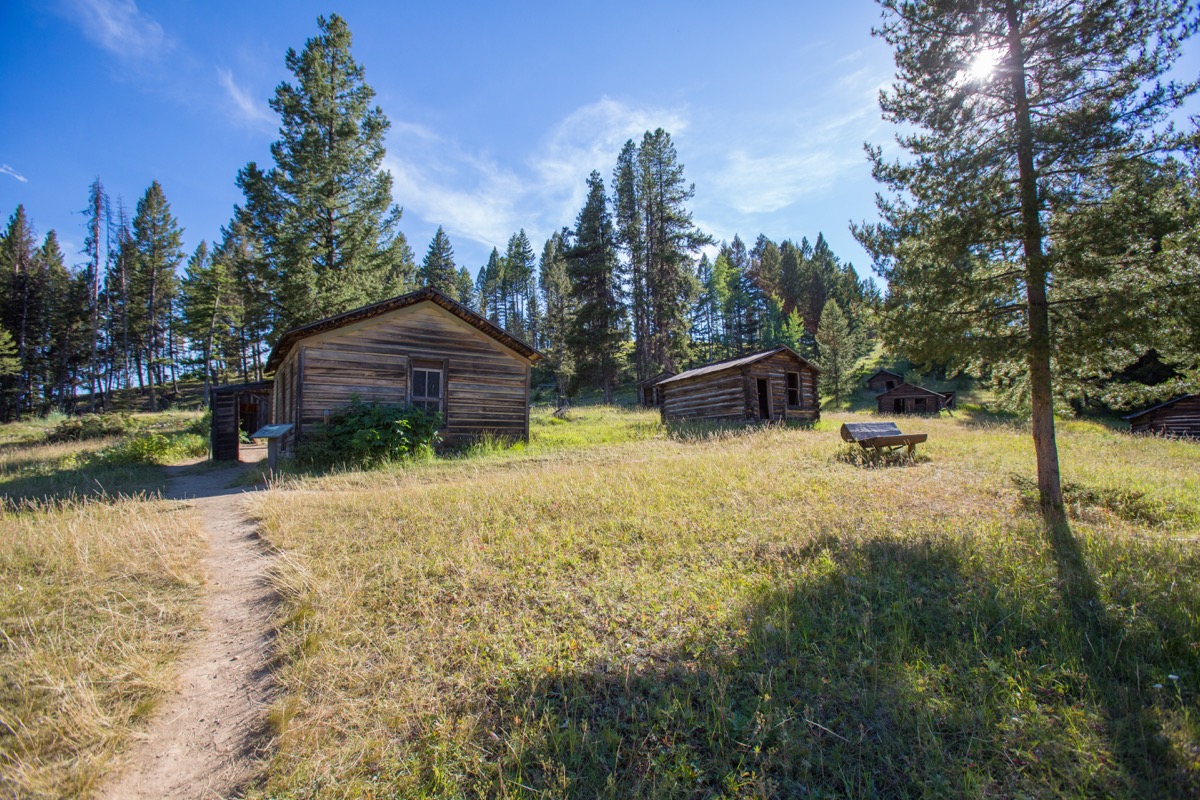
Originally settled in the 1860s, the mining town of Garnet was abandoned in the early part of the 20th century after its gold ran out—and those who didn’t leave then found some serious incentive to do so soon after. In 1912, a fire burned down half of the town, and the place was never rebuilt. Despite the massive fire, however, Garnet is still considered one of Montana’s best-preserved ghost towns, and many of its abandoned buildings remain intact today, providing plenty of eerie abandoned sites to explore.
Nebraska: Chamberlin’s in Roscoe
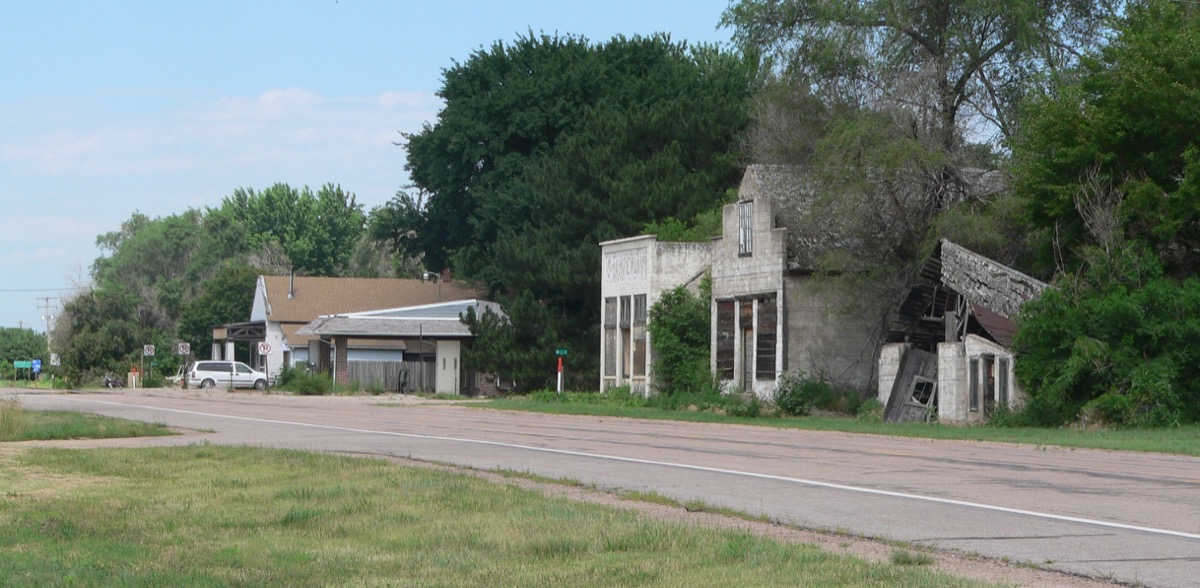
In 1870, Roscoe, Nebraska, officially earned its designation as a town, thanks to the recently-built local railroad station. However, as railroad travel fell out of favor, many of the town’s residents moved on, leaving countless abandoned buildings, but precious few inhabitants, behind. Among the buildings that still stand today are Chamberlin’s, a local store, as well as the gas station and roadside lodging once maintained by the shop’s eponymous owners.
Nevada: The Rhyolite Railroad Depot
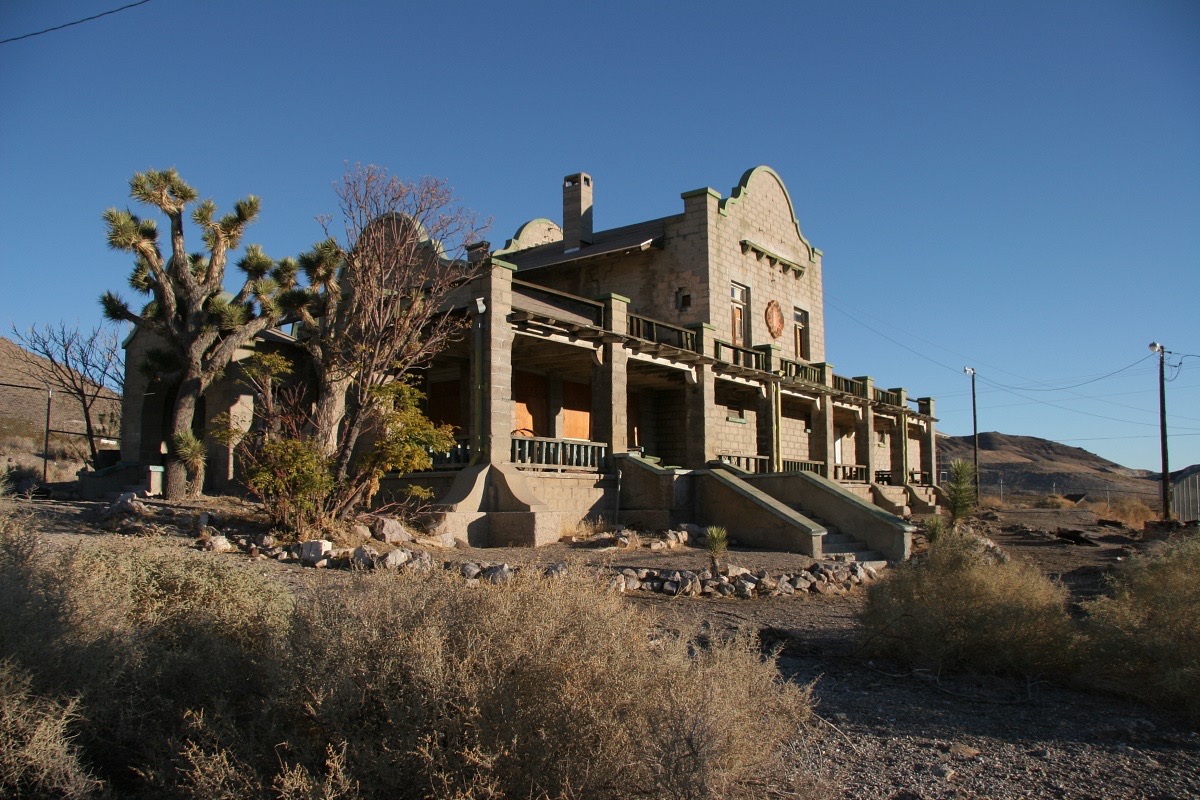
Once a blooming stop on the Las Vegas and Tonopah Railroad, Rhyolite’s Spanish-style train station cost $130,000 to build—or about $3.6 million today. Trains began rolling into the station in 1906, but just eight years later, following the gold rush, they stopped arriving for good. By 1920, the town’s population was nearly zero. The railroad depot became a casino and bar in the ’30s, then a small museum and souvenir shop in the ’70s. Today, it’s completely abandoned.
New Hampshire: Fort Stark
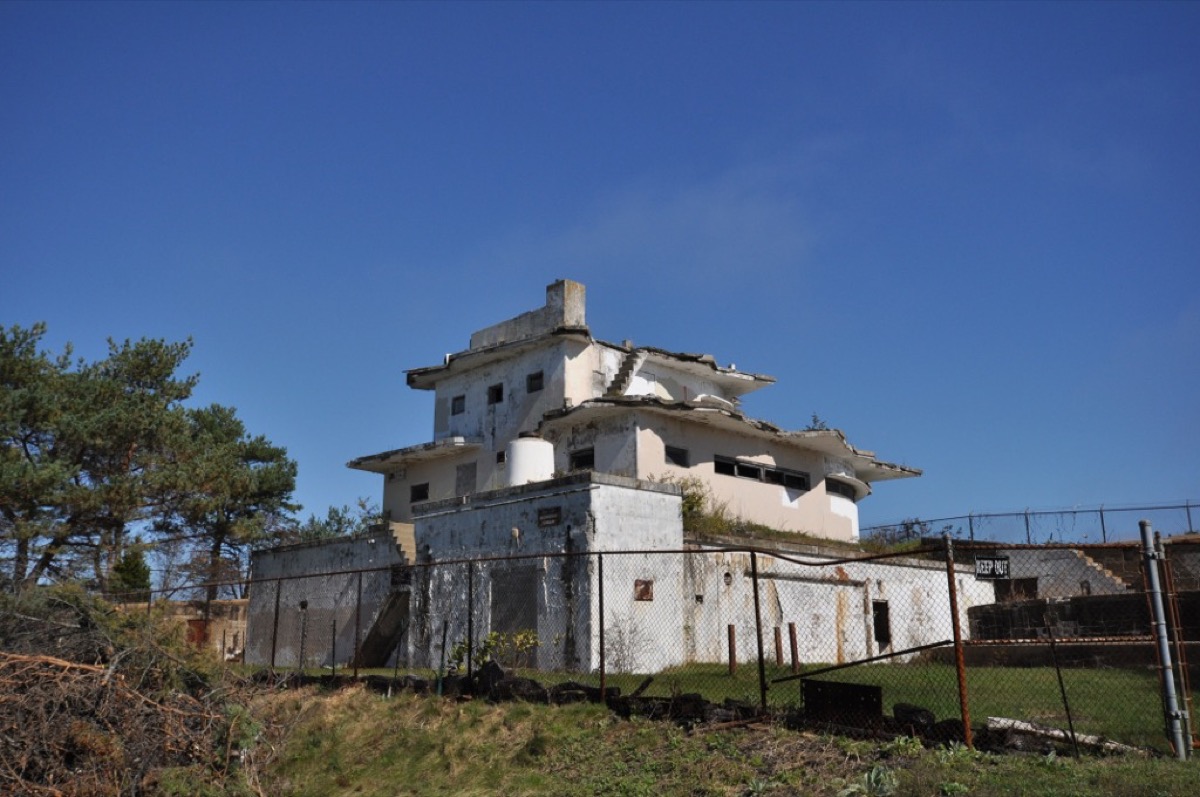
Fort Stark, located in the southeast corner of New Castle Island in New Hampshire, was first constructed after the Spanish-American War of 1898 to help protect Portsmouth Harbor. Today, the fort is considered obsolete and is open to the public during daylight hours. And while you’re welcome to visit Fort Stark, currently run by the New Hampshire State Parks service, it may be a treacherous trip, with rough terrain and fall hazards throughout the site.
New Jersey: The Wayne Hills Mall
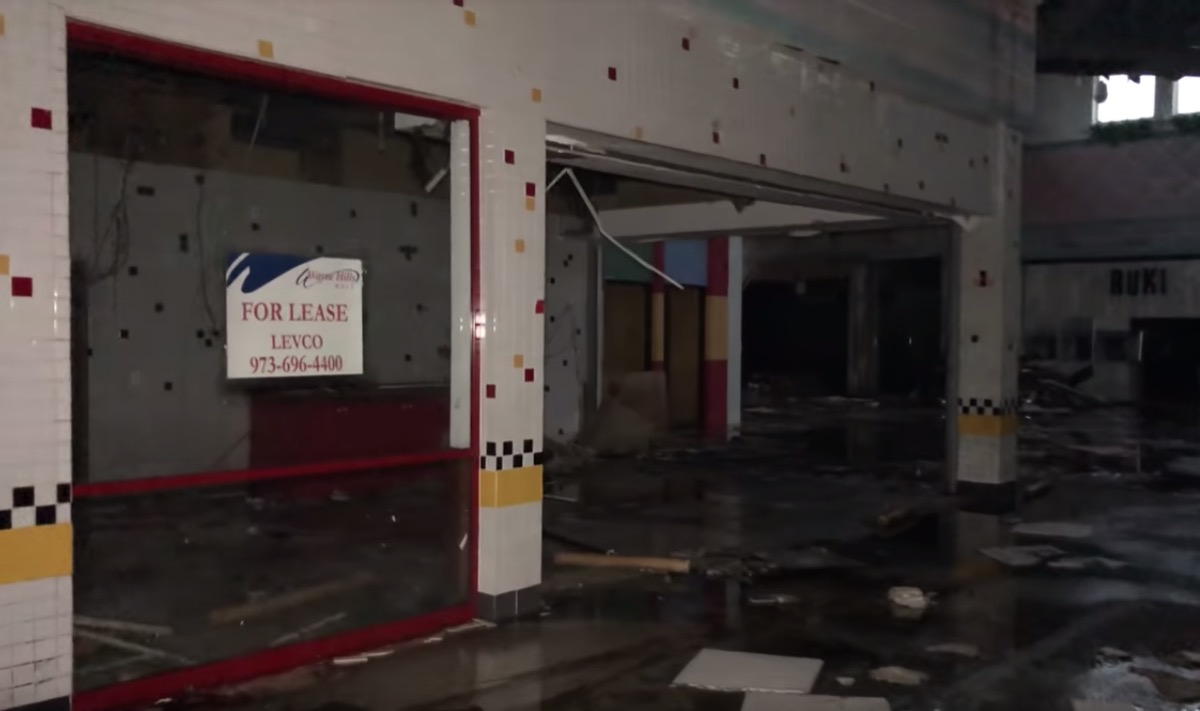
Formerly a popular shopping destination, the Wayne Hills Mall in Wayne, New Jersey, has certainly seen better days. Built in the mid-’70s, portions of the mall were ravaged by fire, while others were shuttered due to the popularity of e-commerce eclipsing brick-and-mortar stores. The main portion of this 103,800-square-foot mall has been closed since the late 2000s, and much of its interior has since been destroyed by vandalism and the elements. However, the site may soon get new life again, with developers proposing the demolition of the existing structure and the creation of a 90,248-square-foot supermarket and five new stores where the mall once stood.
New Mexico: The Ranch House Cafe
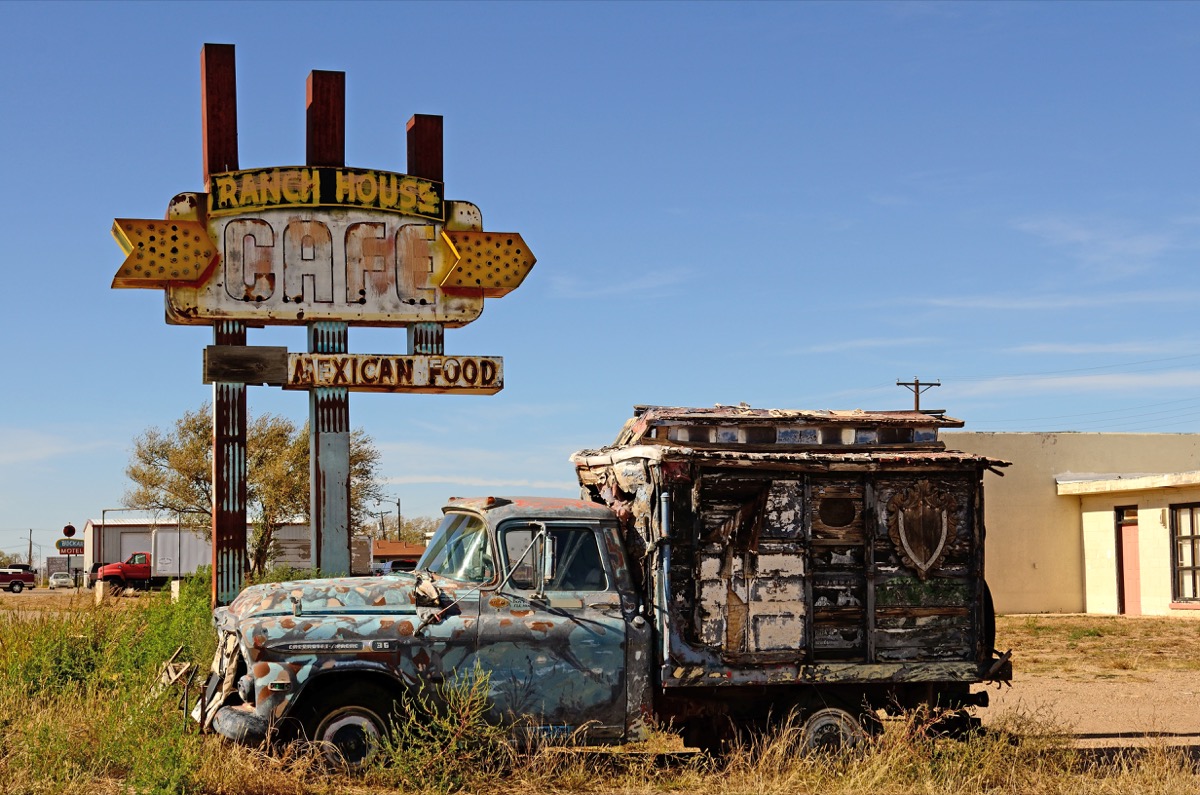
Believed to have opened in 1953, the Ranch House Cafe, located in Tucumcari, New Mexico, along Route 66, seems to be the only standing testament of the town that once thrived there. And while the town hasn’t been entirely abandoned—it was still home to more than 5,000 residents as of 2010—there’s little chance you’ll get to order a meal at this abandoned roadside cafe ever again.
New York: Red Hook Grain Terminal
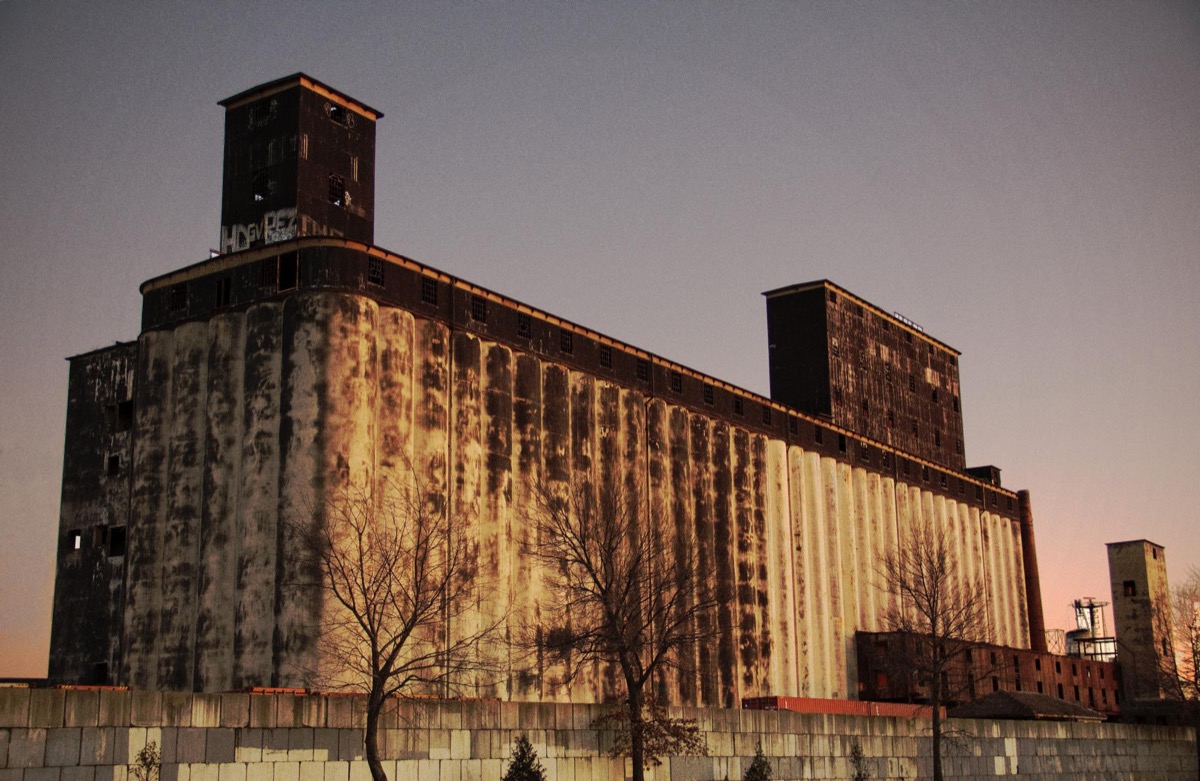
In the 1920s, this massive 12-story structure was built on the Gowanus waterfront in Brooklyn, explicitly to store grains hauled in from the midwest. However, it was seriously underused, and shut down in the mid-’60s. It’s been abandoned ever since. Won’t someone think of the converted loft space!
North Carolina: Stonewall Jackson Manual Training and Industrial School
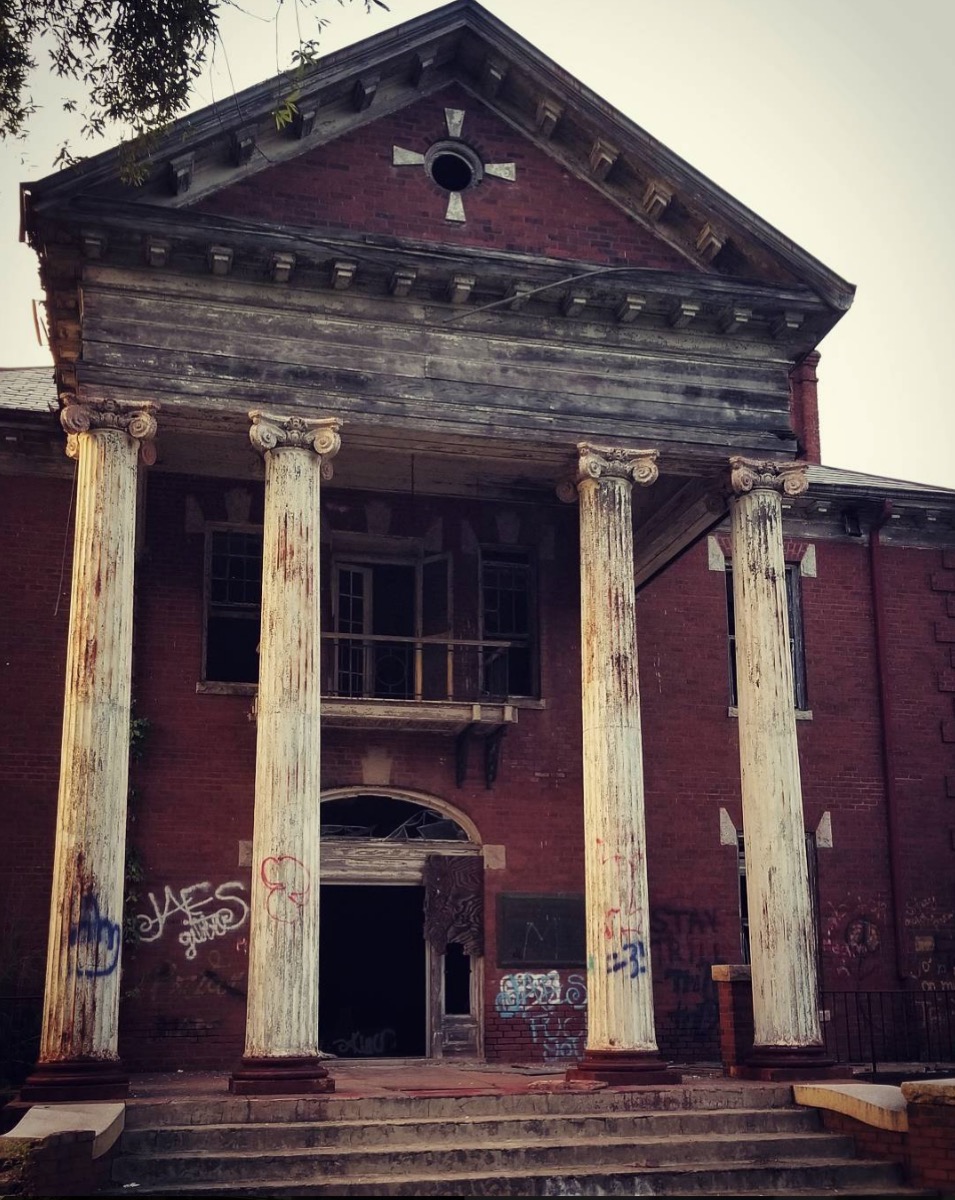
The Stonewall Jackson Manual Training and Industrial School, located outside Concord, North Carolina, first opened its doors to youthful male offenders in 1909 as an alternative to the traditional hard labor given to children found guilty of criminal activity. While today, there are modern youth detention center buildings on the same campus, its early 20th-century buildings are no longer in use, their Ionic columns adorned with graffiti, their windows broken, and their interiors rapidly decaying.
North Dakota: The San Haven Santorium
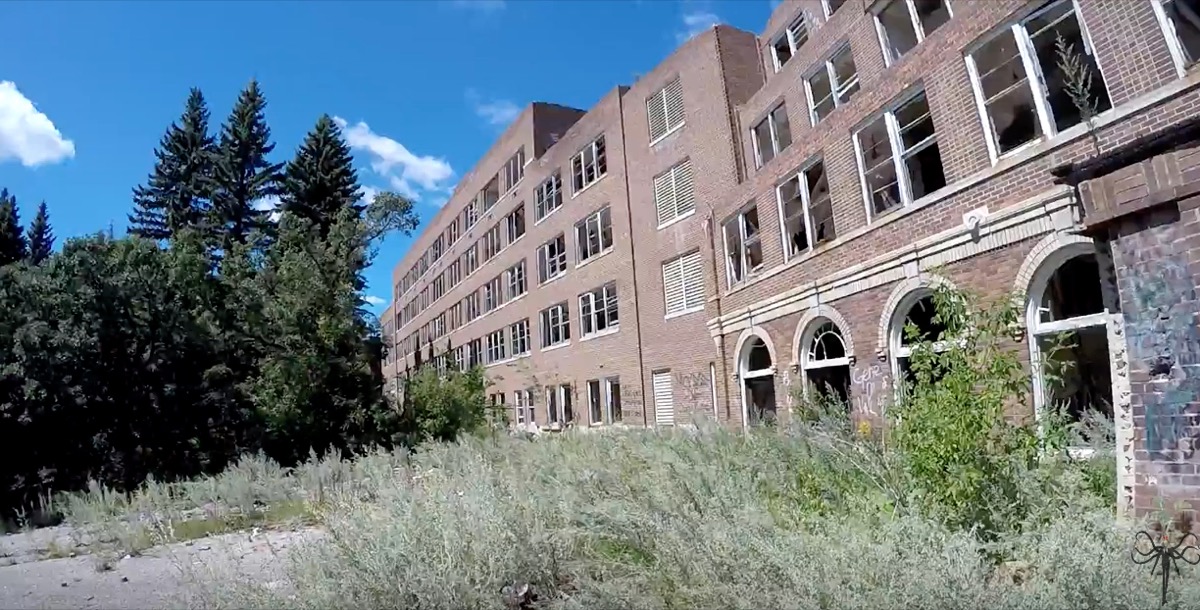
Operational between 1912 and 1987, this abandoned tuberculosis hospital and sanatorium is believed to be one of the most haunted places in the country. Since its closing, the building has even been a hub for satanic rituals and practices, according to the Travel Channel’s Ghost Adventures.
“In exploring San Haven, we immediately felt a heavy foreboding due to the atmosphere of a place which harbored so much suffering, amplified by the extended period of abandonment,” writes photographer Troy Larson on the website Ghosts of North Dakota. Long story short: enter at your own risk.
Ohio: The Ohio State Reformatory
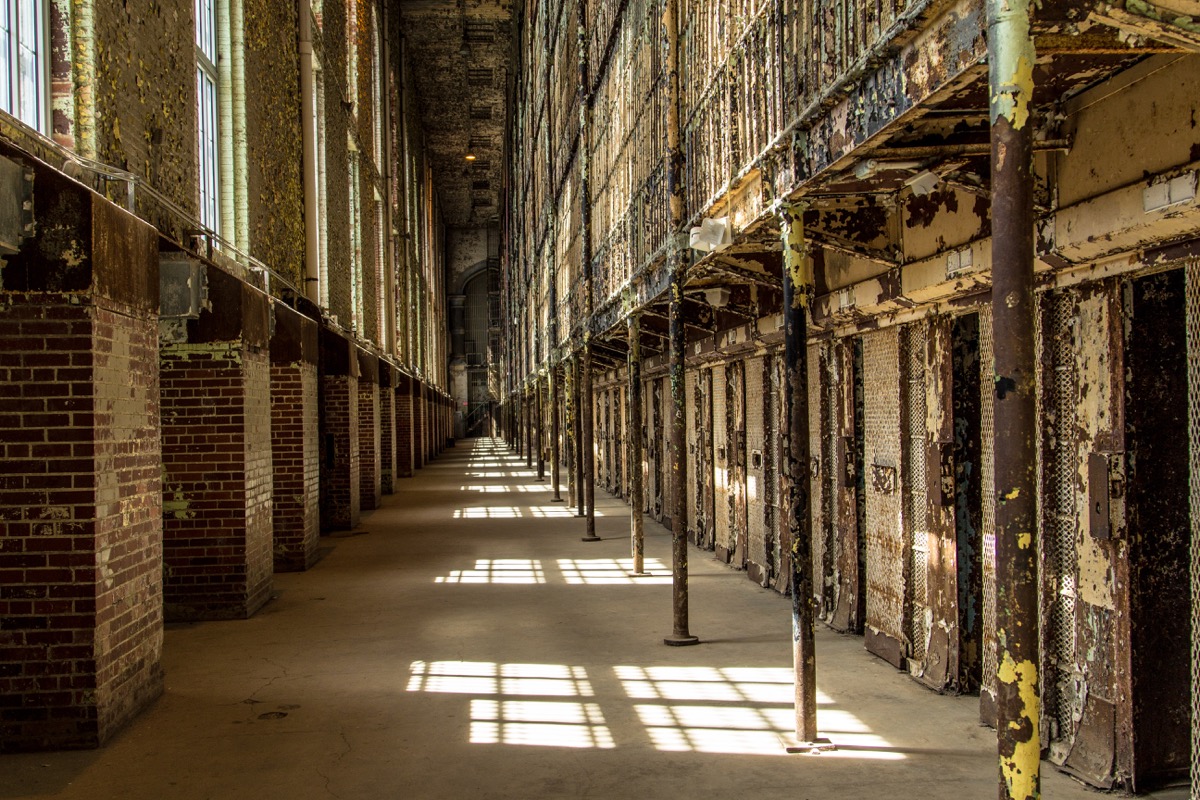
Also known as the Mansfield Reformatory, this historic prison was open from 1896 to 1990, when it was shut down as the result of a prisoners’ class action suit claiming overcrowding and inhumane conditions. In the years since, most of the prison has been restored and is open for tours to the general public. (Fun fact: The Shawshank Redemption was filmed at this reformatory.)
Oklahoma: The Avon Court Motel
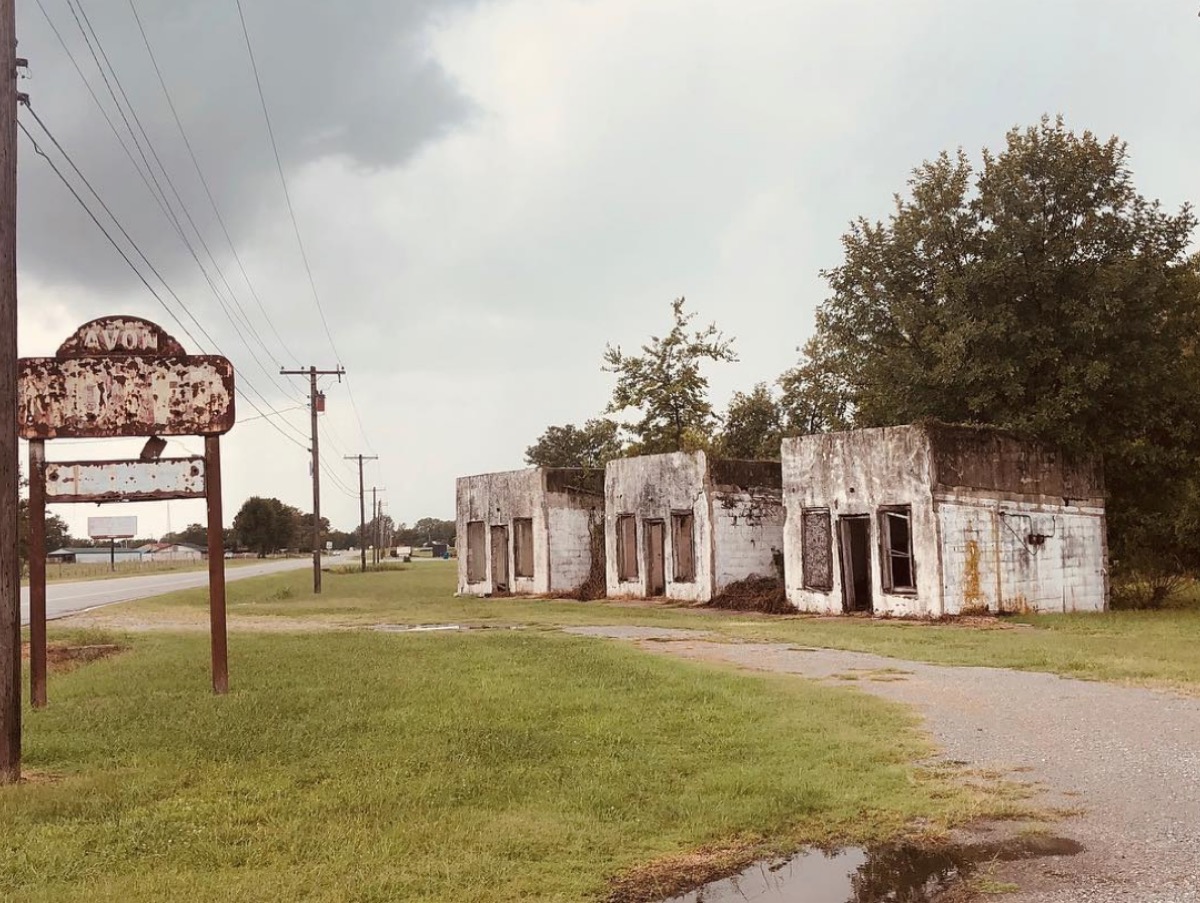
If you’re looking for a place to stay while passing through Afton, Oklahoma, the Avon Court Motel probably won’t top your list. While the town is still home to a population of just over 1,000—thanks in large part to the abandonment of the mining towns on either side of it due to contamination of the water and soil—its roadside motel has long since been abandoned. Today, all that remains of the former guest quarters are a rusted sign and worse-for-wear lodging with boarded-up windows and missing doors.
Oregon: The Tillamook Rock Lighthouse
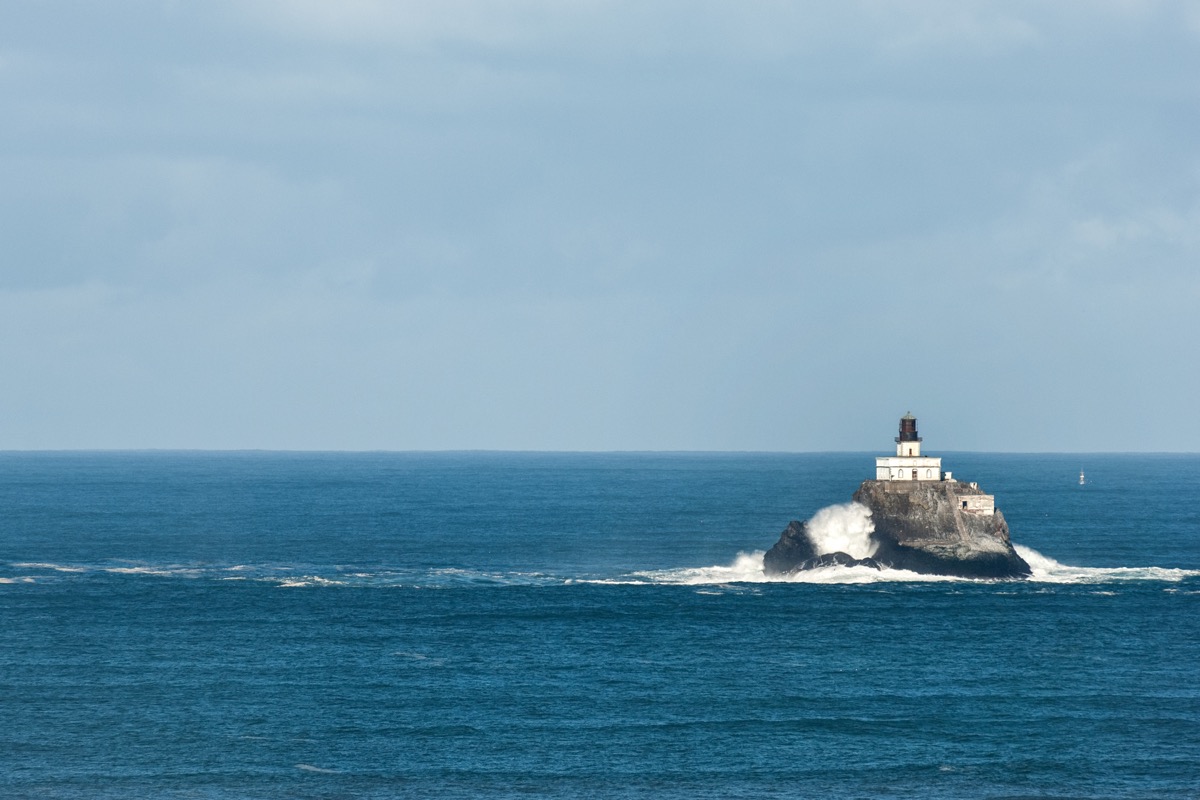
Located just off the coast of Tillamook Head, Oregon, the Tillamook Rock Lighthouse kept ships on track from 1881 until it was initially abandoned in 1957, due to the island’s constant harsh conditions. But that’s not the eeriest thing about this stormy site: In 1980, the lighthouse was sold to a group of realtors who created the Eternity at Sea Columbarium, and used the landmark to inter about 30 urns of human remains until its license was revoked in 1999. The lighthouse has been privately owned and abandoned ever since.
Pennsylvania: The New Jersey Zinc Company plant
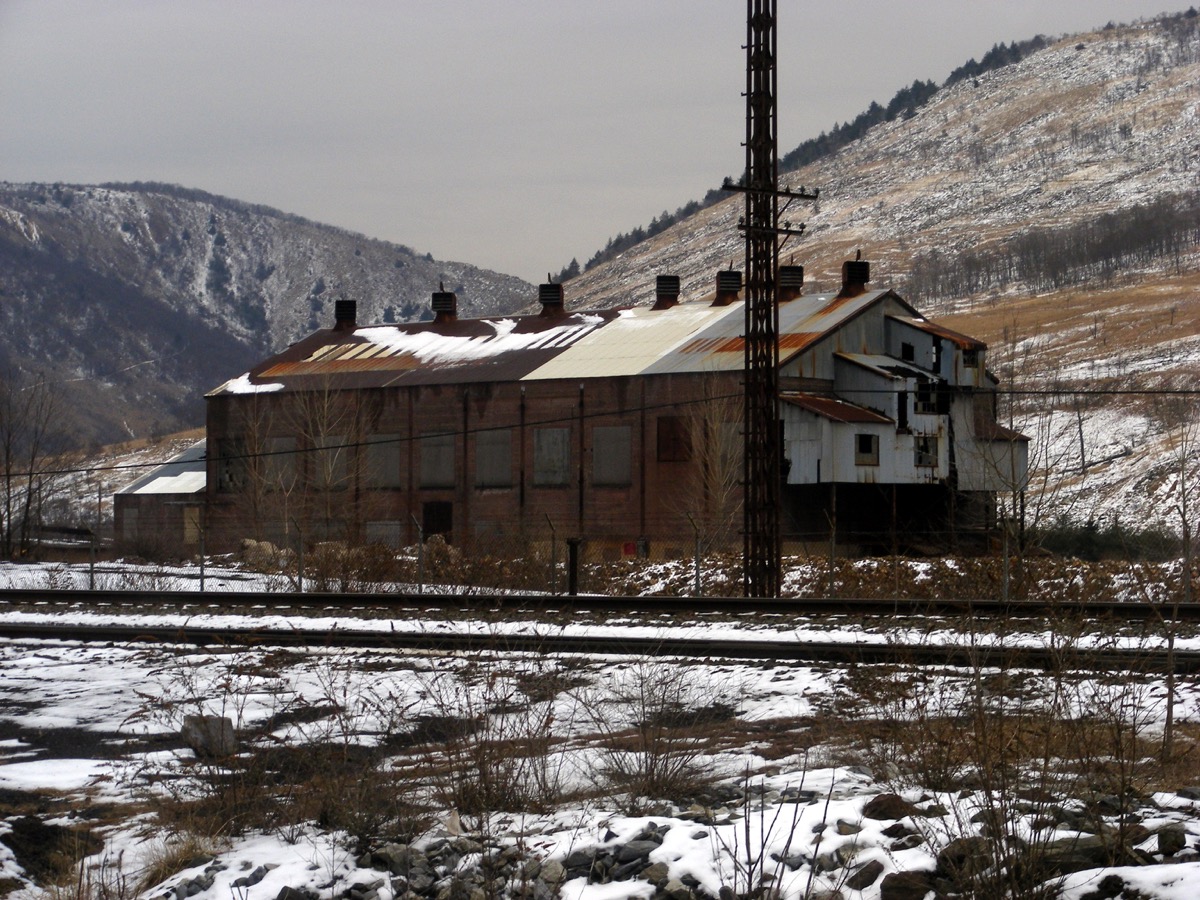
Due to a declining zinc market (and the damage it inevitably did to the environment surrounding it), the New Jersey Zinc Company plant in Pennsylvania closed its doors in the 1980s. Today, it’s frowned upon to visit the abandoned plant (and most of it has been demolished, anyway) due to the number of dangerous chemicals it houses and live wires that still surround the site—the latter reportedly responsible for the death of a trespasser in recent years.
Rhode Island: Woonsocket Middle School
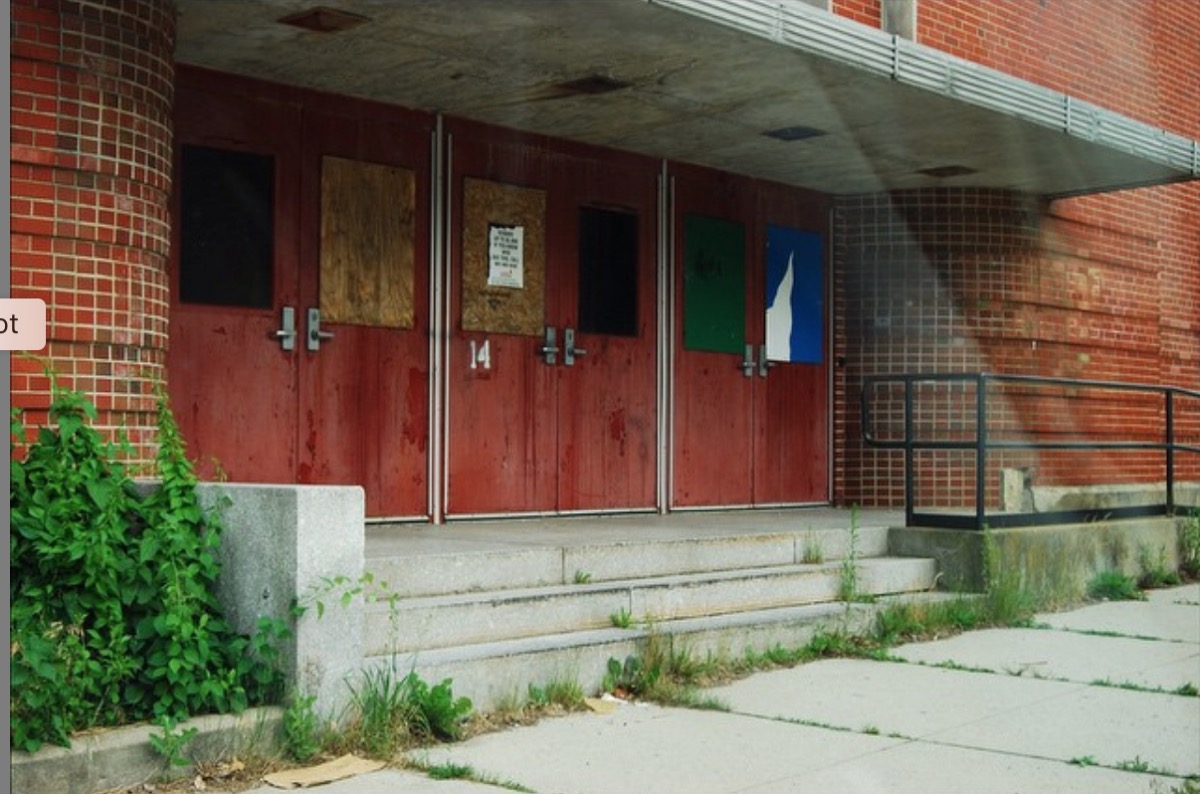
Some kids wish their middle school would shut its doors and never reopen again. Some lucky residents of Woonsocket, Rhode Island, got their wish. The original Woonsocket Middle School, built in 1914, closed for good in 2009, when a newer school was erected nearby. In the decade since then, the school has largely been preserved—while its halls are eerily empty, art projects still hang on its walls, blackboards still bear the faint traces of chalk scribbles, and papers litter its floors.
South Carolina: The Babcock Asylum
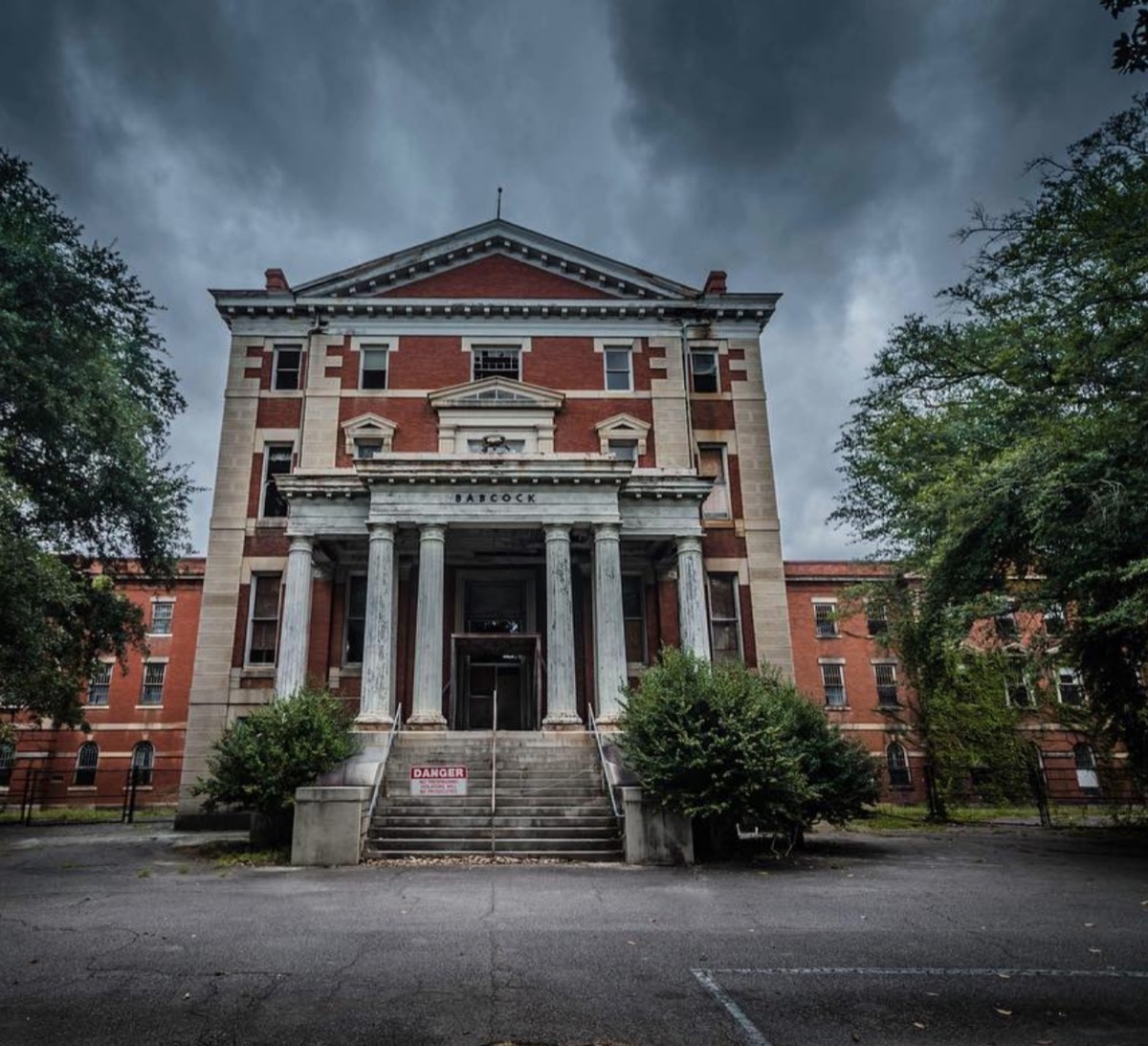
In Columbia, South Carolina, the shell of the Babcock Asylum for the mentally ill still stands where the building was originally erected more than 100 years ago. First built in the mid-19th century, the building—added to the National Register of Historic Places in 1981—is now a monument to peeling paint and broken windows, its graffitied halls bearing little trace of those kept there for their own safety—and the safety of others—once upon a time...
South Dakota: This building in the town of Capa
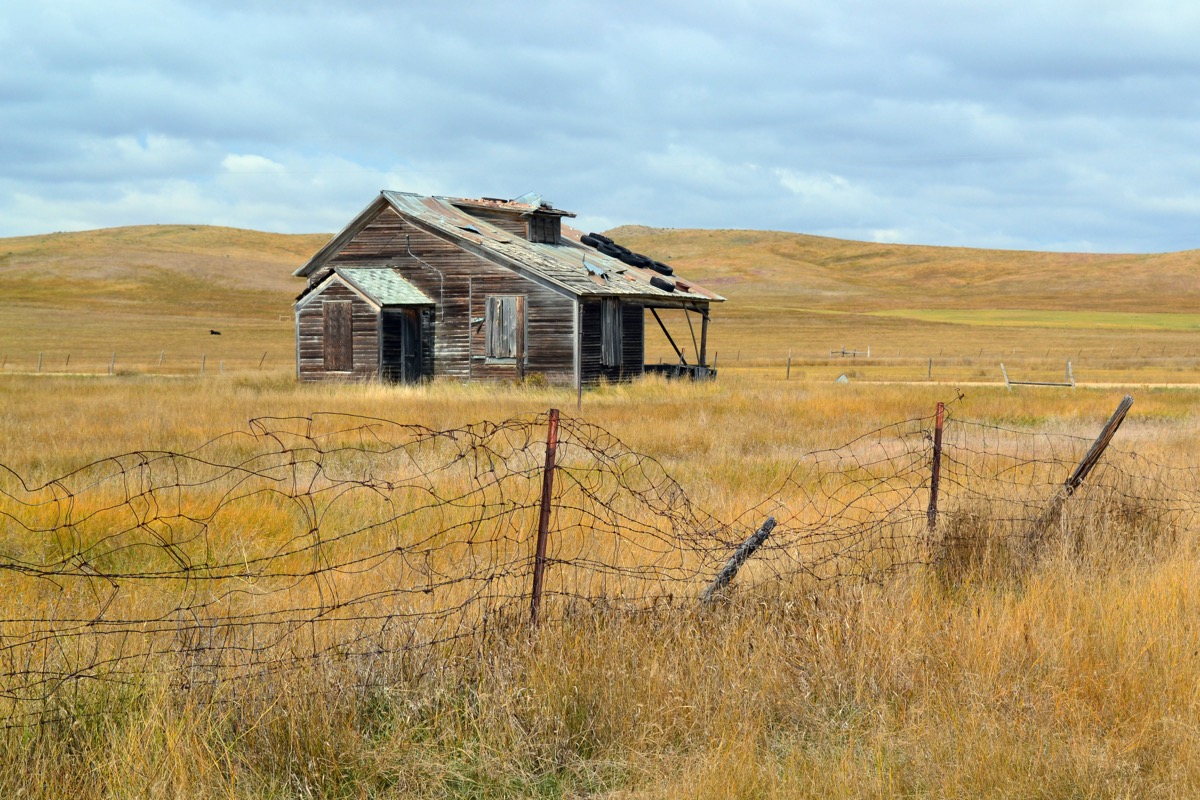
In recent years, the ghost town of Capa, South Dakota, has received some publicity for having a population of one—Philip O’Connor, who still lives in the same home that his parents and grandparents once inhabited. Aside from O’Connor, though, this plains town is vacant, although several buildings remain standing—including the semi-famous Capa Hotel, which housed several hot mineral baths back when it was fully functioning.
Tennessee: The Tennessee State Prison
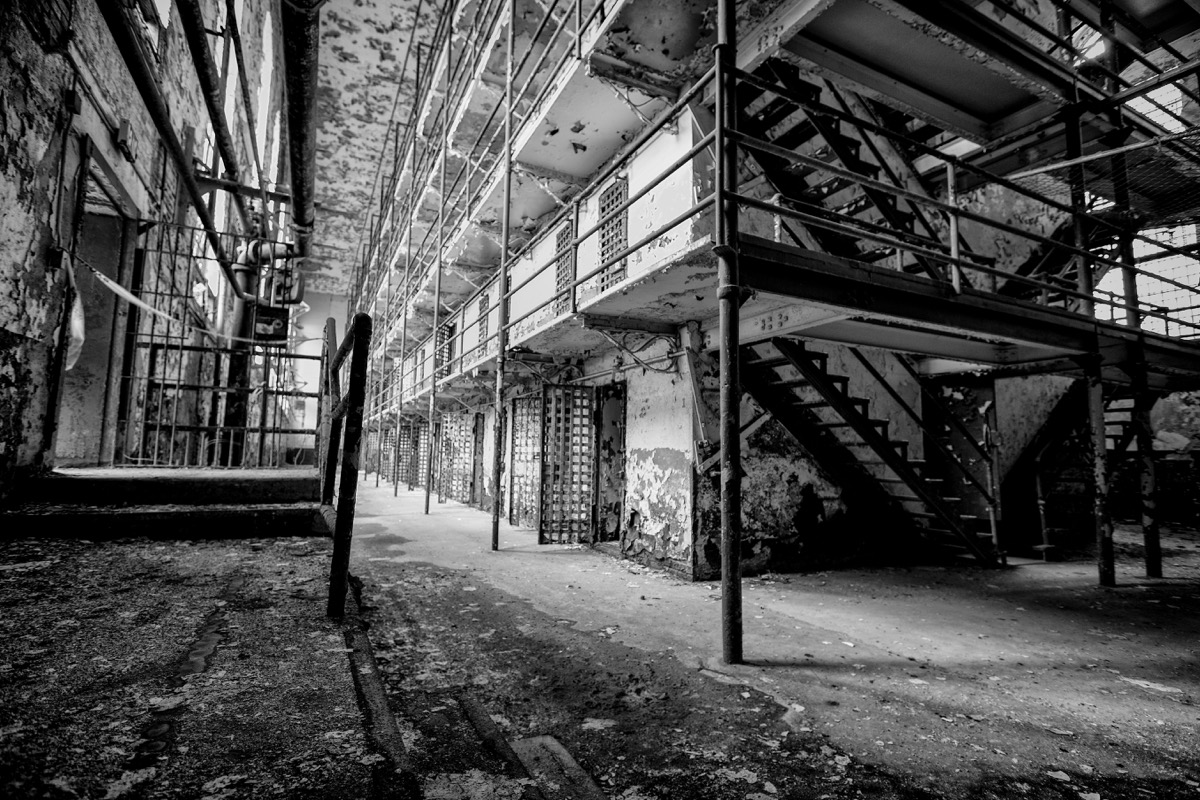
While the outside of the Tennessee State Prison still looks like a castle (you’ll have to take our word on this one), the inside (above) is something straight out of your worst nightmare. The now-defunct prison, which opened in 1898 and was shuttered in 1992, contains 800 six-foot by eight-foot cells that were unheated and unventilated. In its early days, each prisoner was forced to offset a portion of the cost of their incarceration by performing some 16 hours of physical labor a day. While it’s still structurally sound today, visitors are unable to enter due to asbestos and other health concerns.
Texas: The Baker Hotel
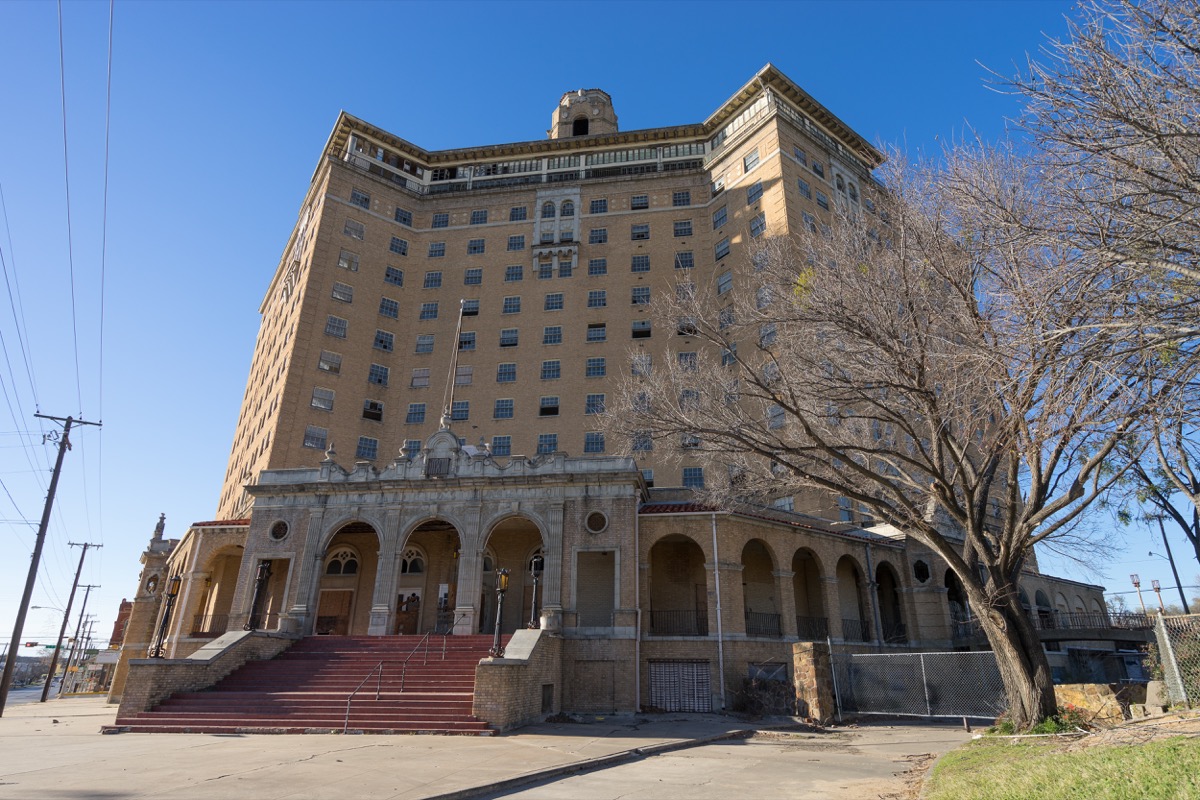
Listed on the National Register of Historic Places, the Baker Hotel in Mineral Wells, Texas, has been abandoned since 1972, with vandalism and elemental decay continually threatening its already-precarious stability. Though many groups have made offers to buy the property since it closed, attaining adequate funding to rehabilitate this once-luxurious property has proven difficult. However, interest in the property continues to be fueled by ghost hunters, with shows like Ghost Adventures and Celebrity Ghost Stories filming within its walls to this day.
Utah: The Home of Truth
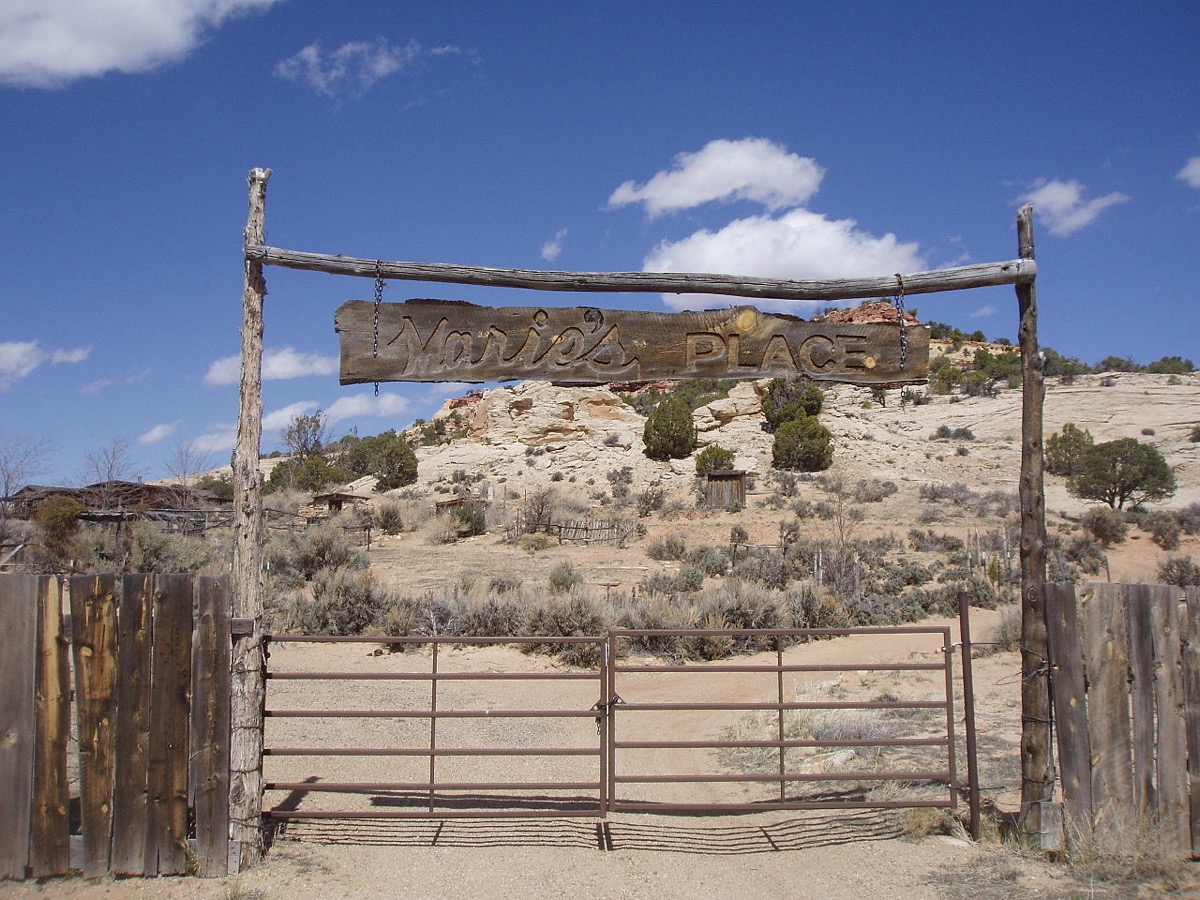
Home of Truth, located in a remote part of Utah, once housed a utopian religious intentional community in the 1930s, led by spiritualist Marie Ogden. Most of the group disbanded in 1937 when Ogden claimed that she was attempting to raise a woman from the dead. A few stragglers remained on the remote ranch, but, by 1977, all of the residents had moved on, leaving behind little more than a collection of abandoned buildings set against a dusty desert backdrop. They’re still visible from the nearby Needles District of Canyonlands National Park today.
Vermont: Hyde’s Hotel
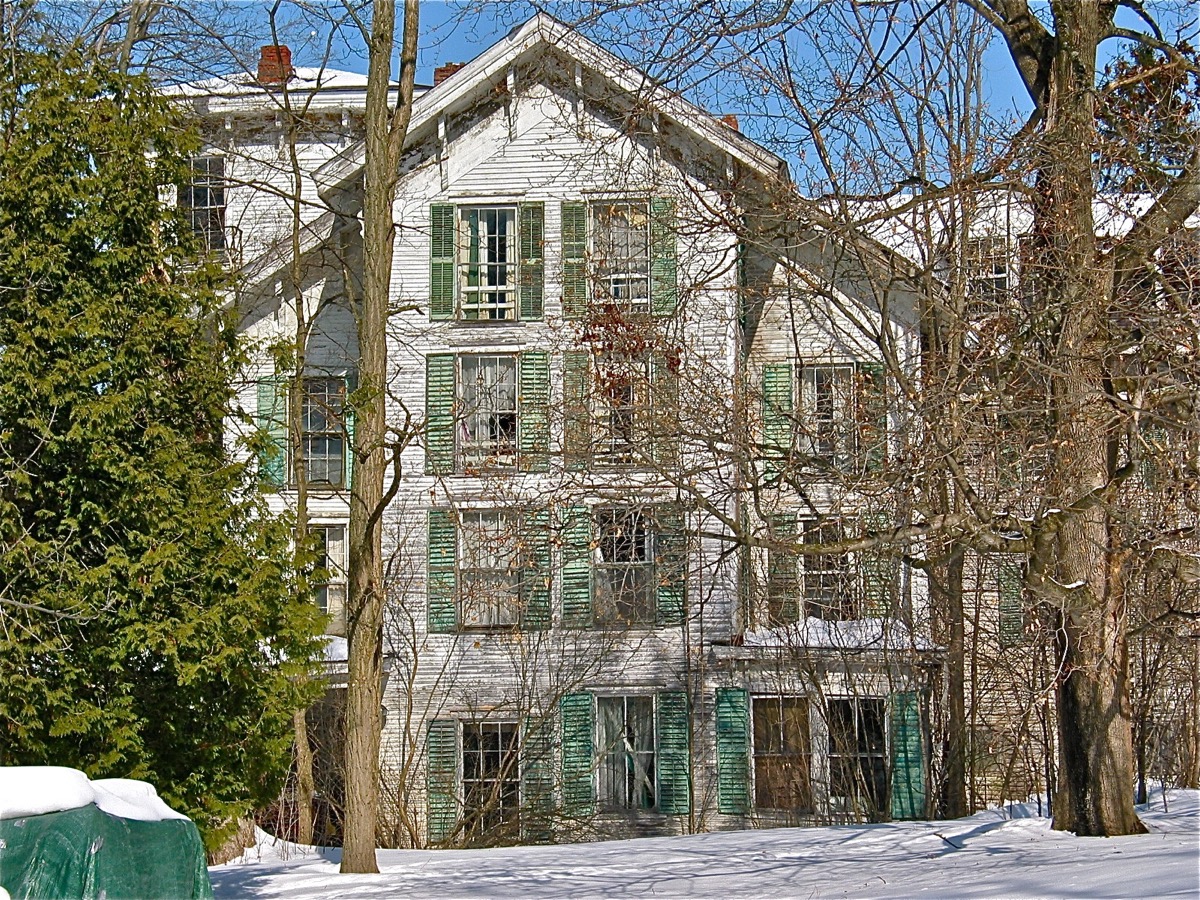
While the Green Mountain State is known for its quaint B&Bs, it’s also home to some less-than-welcoming abandoned properties, like Hyde’s Hotel. Located in the small town of Sudbury, this hotel—also known as Hyde Manor—was built in 1865 after the main building on the same property was destroyed in a fire. Today, the former hotel is abandoned, though its broken windows, crumbling roof, and decaying siding make for an intriguing yet spooky sight for drivers passing by along nearby Route 30.
![Virginia Renaissance Faire [Abandoned]](https://bestlifeonline.com/wp-content/uploads/sites/3/2019/02/Virginia-Renaissance-Faire-Abandoned.jpg)
Virginia: The medieval structures at the Virginia Renaissance Faire
Most towns’ Renaissance faires take place at the county fairgrounds—but not Fredericksburg’s. The Virginia Renaissance Faire, which operated from 1996 to 1999, was built deep into the wilderness near Fredericksburg to mimic the appearance of a medieval village.
Unfortunately, the fair failed to attract large crowds—perhaps because it was built on a swamp in the middle of nowhere—and shut down after just two seasons. The structures, however, remain. And while it’s an impressive sight, it’s one best viewed from the privacy of your own internet connection—the property is under surveillance by the Stafford County Sheriff’s Department and does not allow visitors.
Washington: Old Govan Schoolhouse
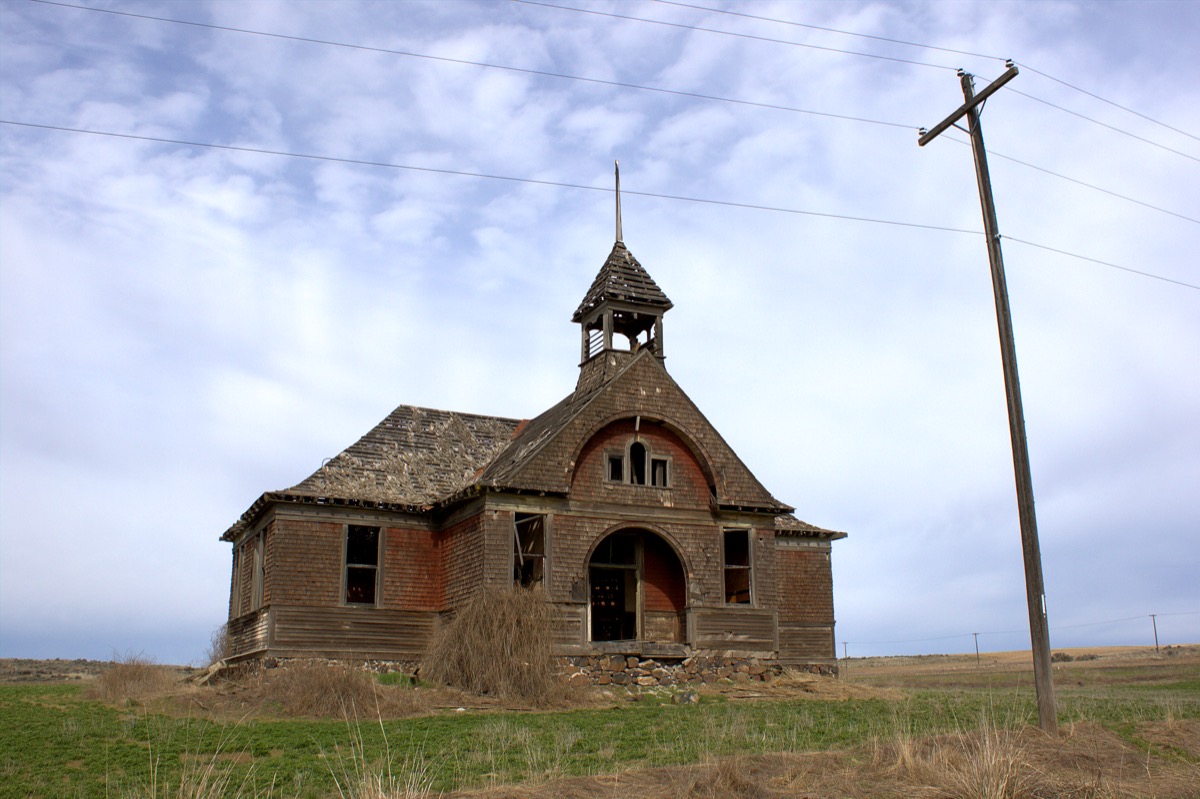
Head an hour-and-a-half out of Spokane, west on US-2, and you’ll find Govan, as much of a “ghost town” as any town can be. A fire in the early 20th century devastated the town. Then the school (pictured) shut down in 1942. And, finally, the U.S. Post Office closed in 1967, formally settling Govan’s fate. Few buildings remain, but the school is still standing, if you’re looking for locations to film a dark, artsy B-movie.
West Virginia: Lake Shawnee Amusement Park
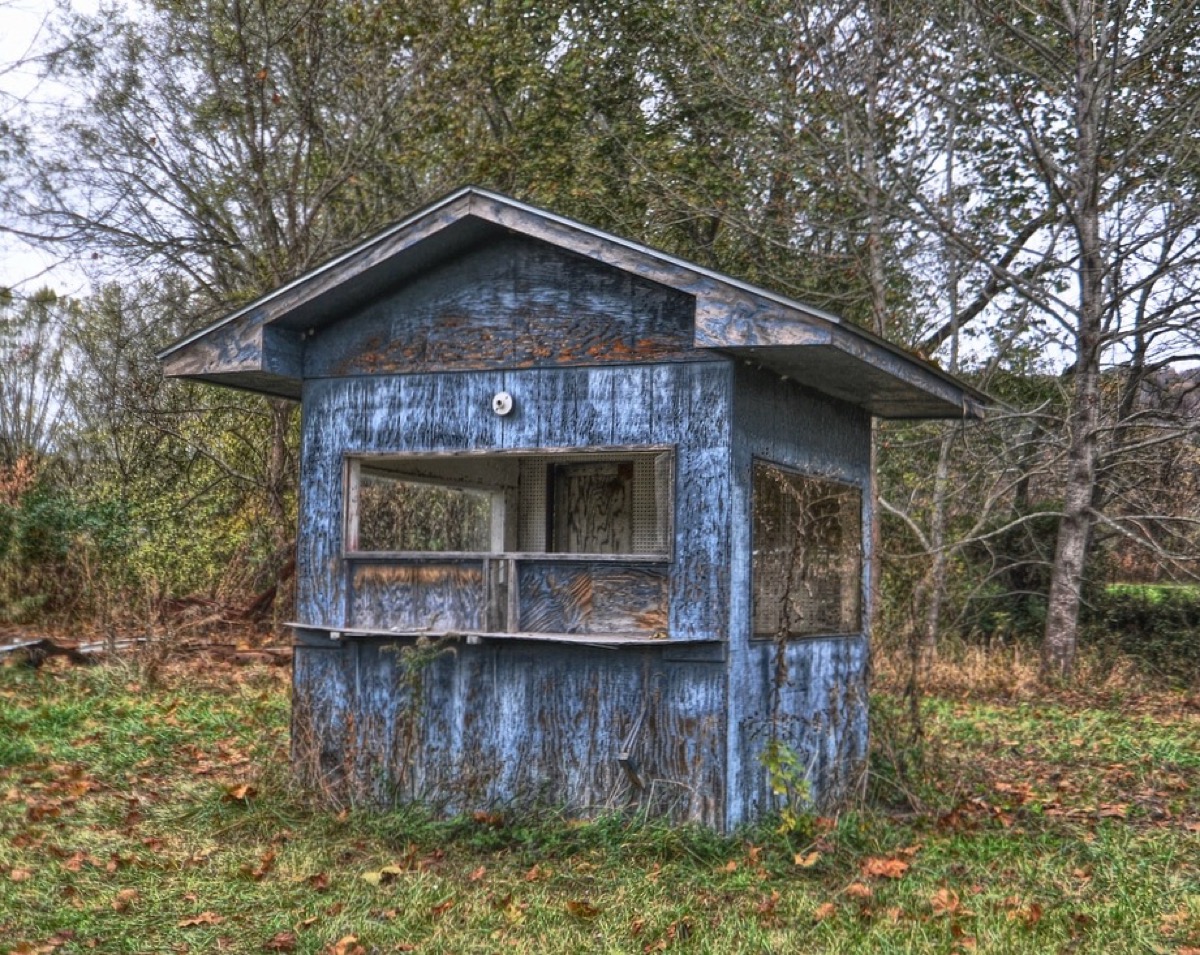
After operating for 40 years, the Lake Shawnee Amusement Park halted all operations after the deaths of two young patrons in 1966. In fact, the park has a particularly bloody history: six children died on park rides over the park’s four-decade run. Today, the park as a whole is of course petrifying. But there’s something particularly spooky about an abandoned lonesome ticket stand. If you want to visit the park these days, you won’t find any services—but you will find dedicated tours that operate during the Halloween season.
Wisconsin: The Northridge Mall

There’s nothing like a murder to make an abandoned building even creepier. While the Northridge Mall in Milwaukee, which opened its doors to customers in 1972, was once a bustling commercial hub, the murder of a woman outside one of the mall’s restaurants in 1992 may have soured some of its once-eager shoppers. With the rising popularity of online shopping, retailers jumped ship and the mall has been abandoned since 2009.
Wyoming: The Smith Mansion
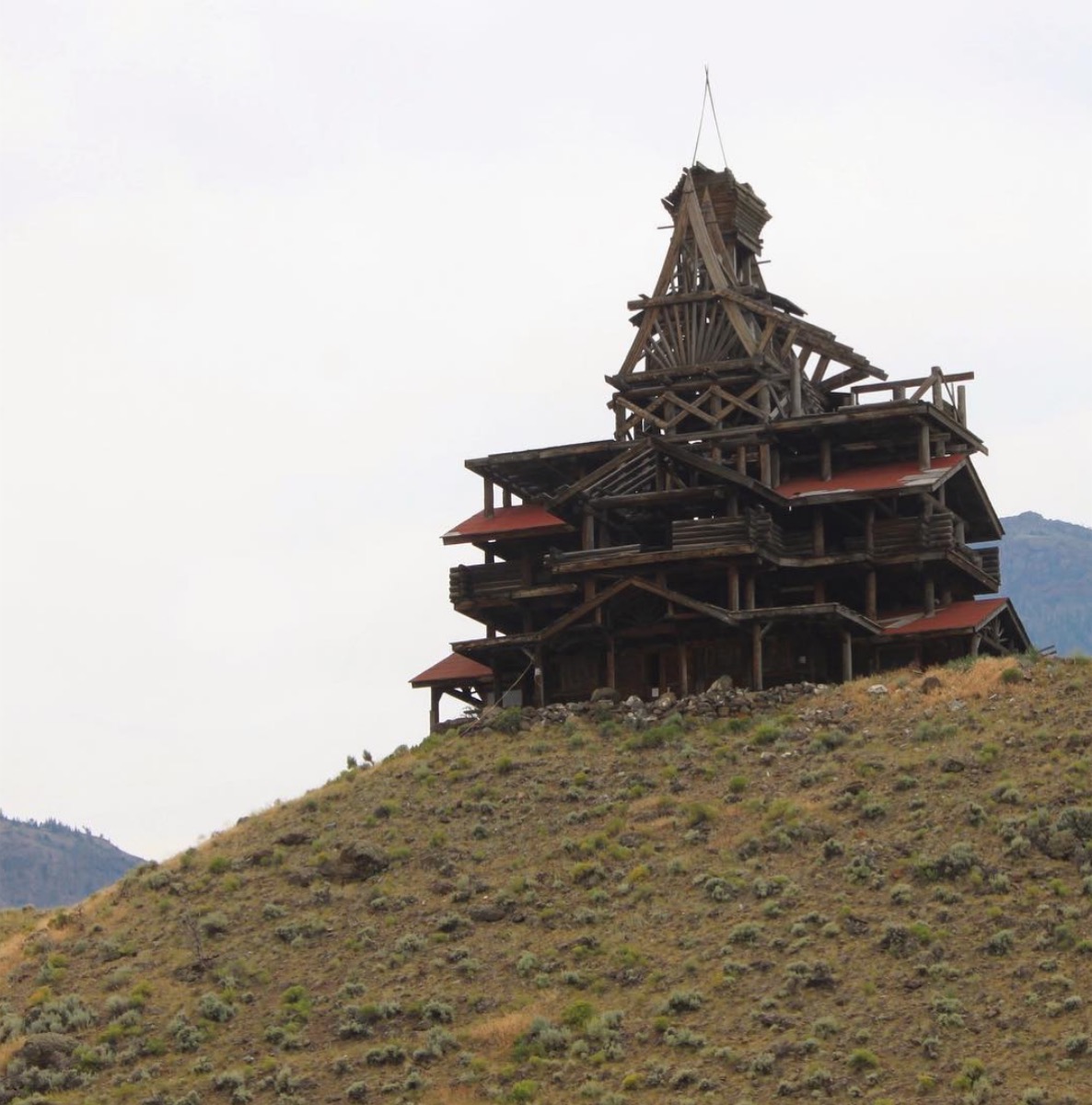
Set atop a hill in Cody, Wyoming, the Smith Mansion is one of the state’s most fascinating abandoned sites. Engineer Francis Lee Smith built the impressive wooden home by hand, the construction of the unique building eventually contributing to the dissolution of his marriage—and his eventual demise. In 1992, while working on one of the home’s balconies, Smith fell to his death, and the house remains unoccupied to this day. And for more trivia about this land of ours, check out The Craziest Fact About Every U.S. State.
To discover more amazing secrets about living your best life, click here to follow us on Instagram!